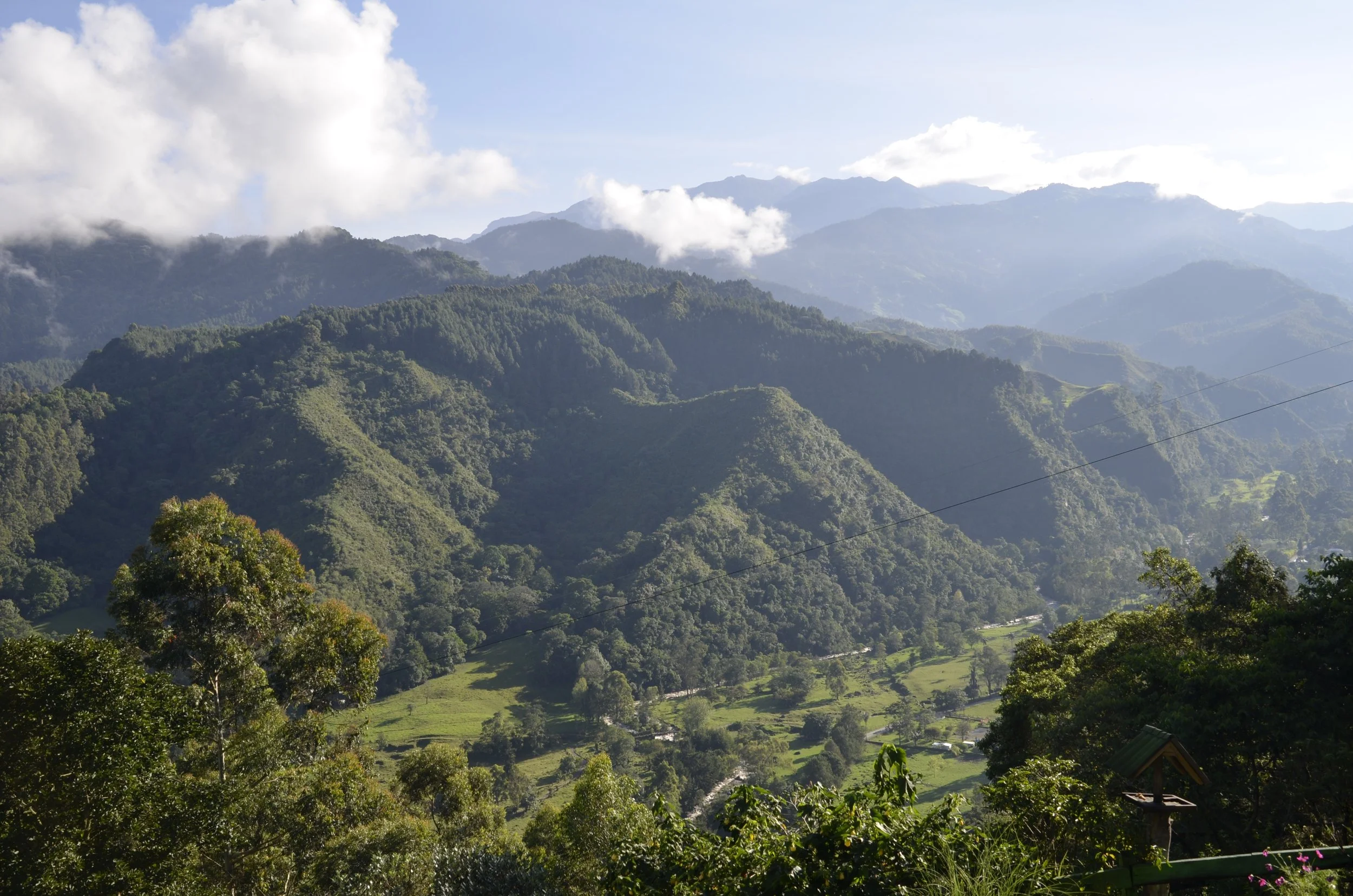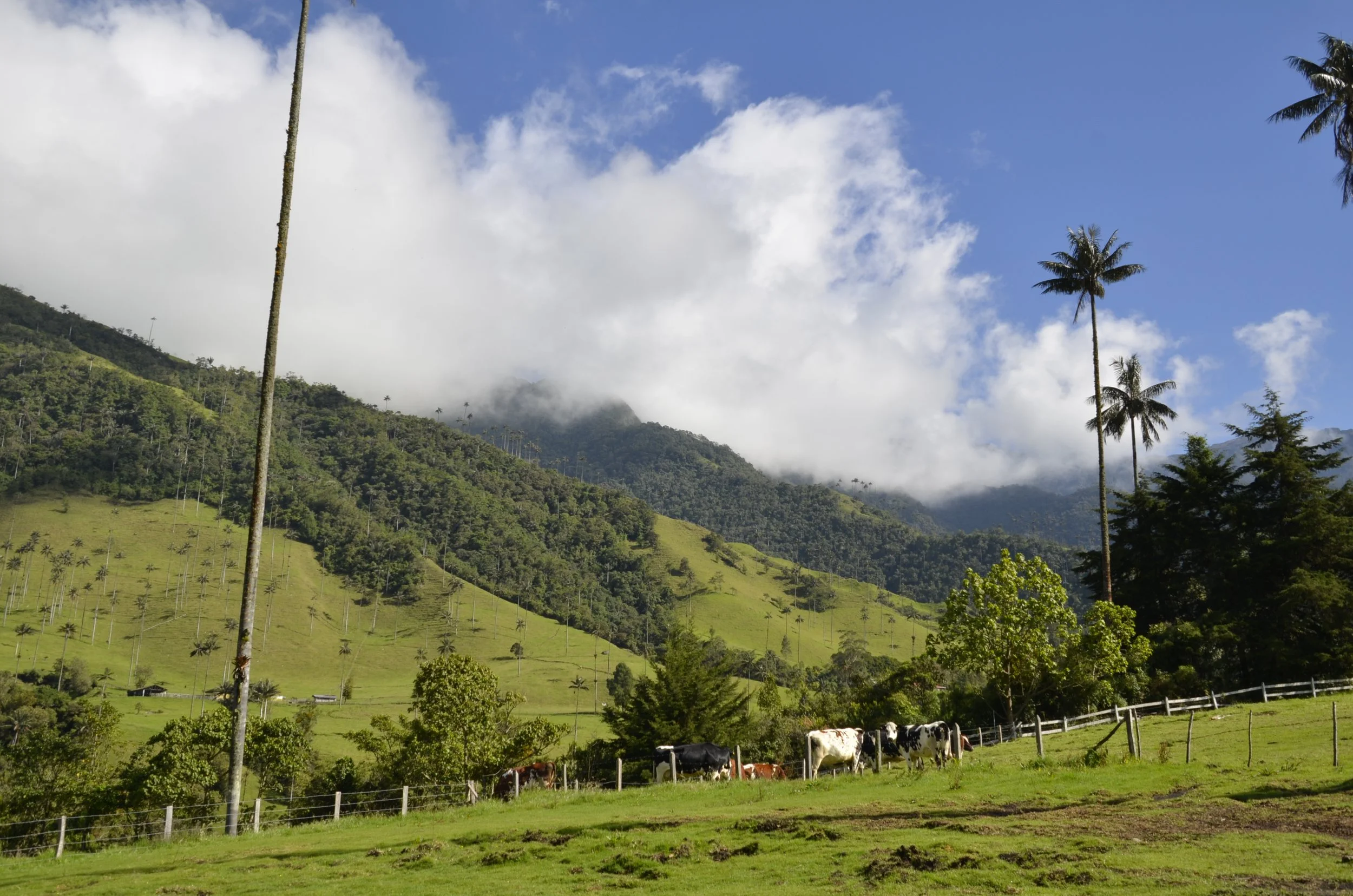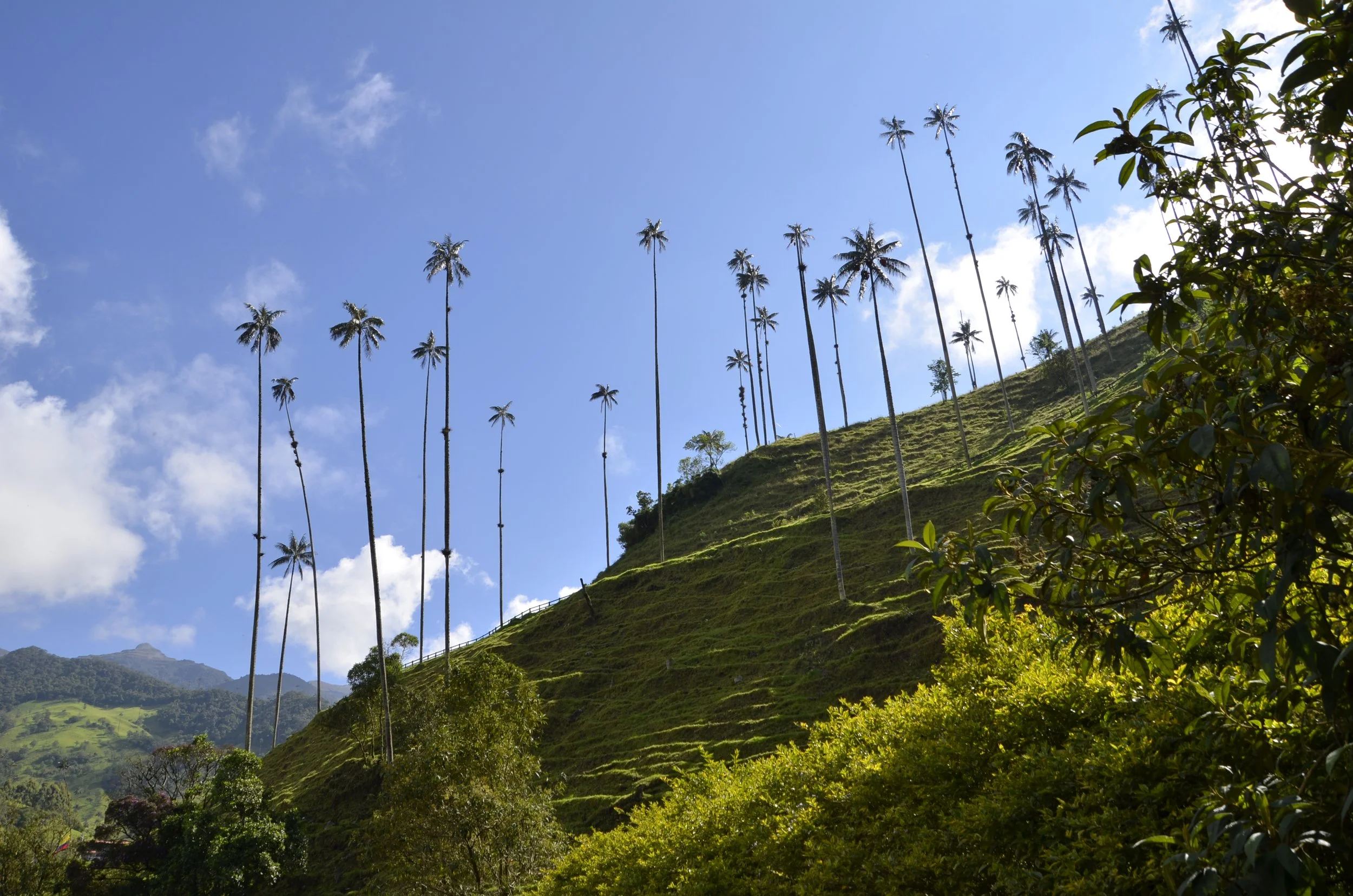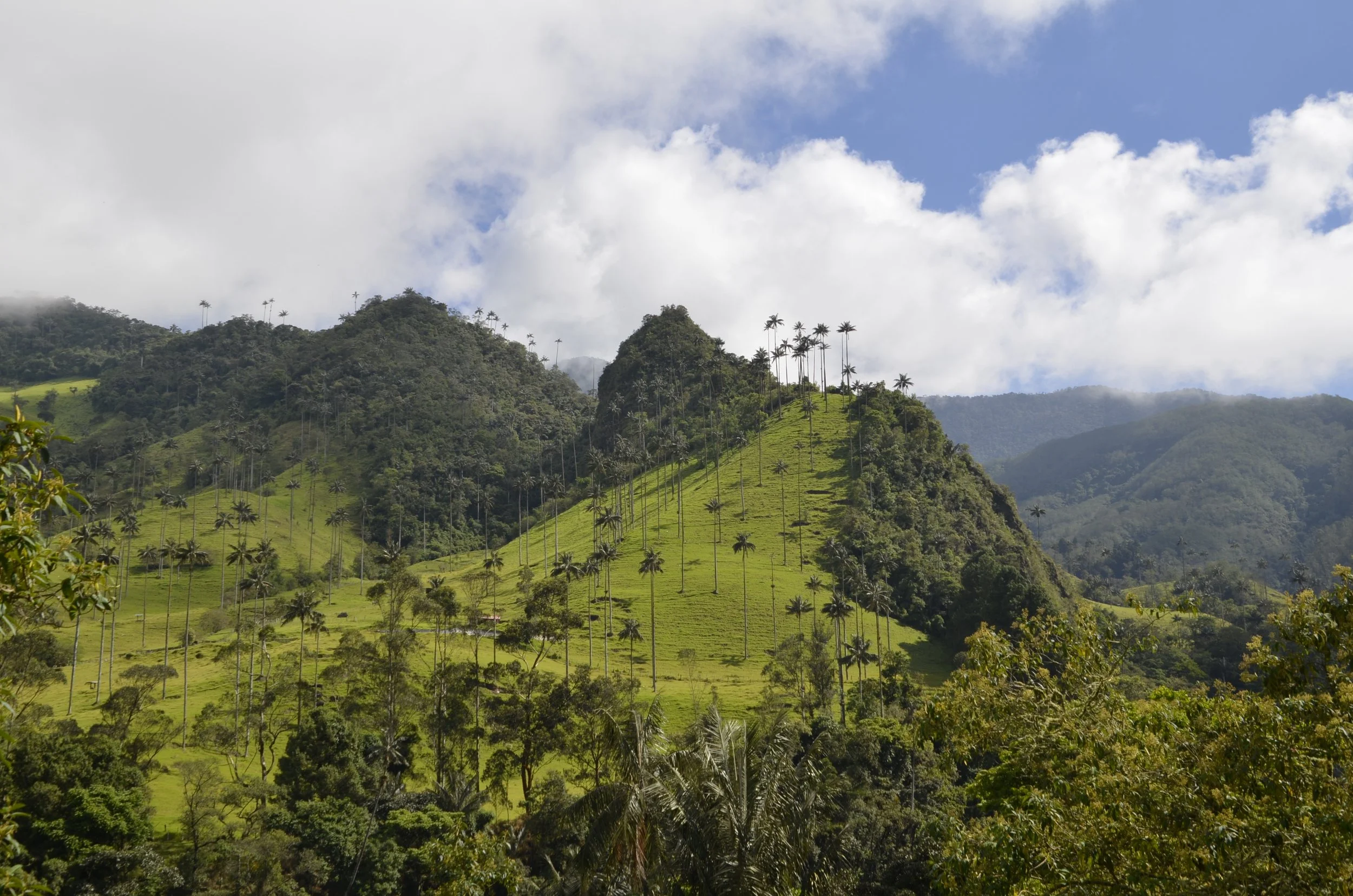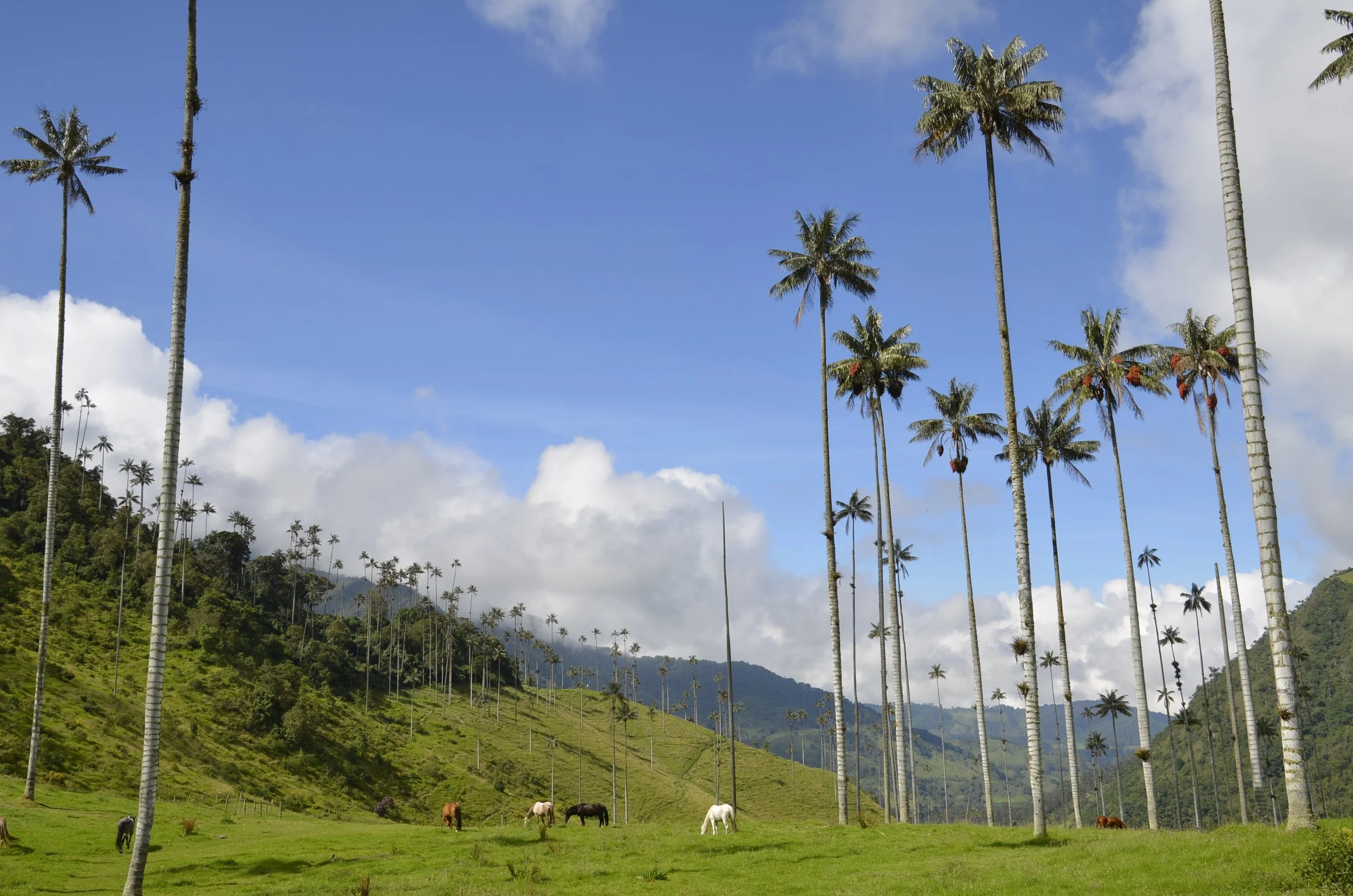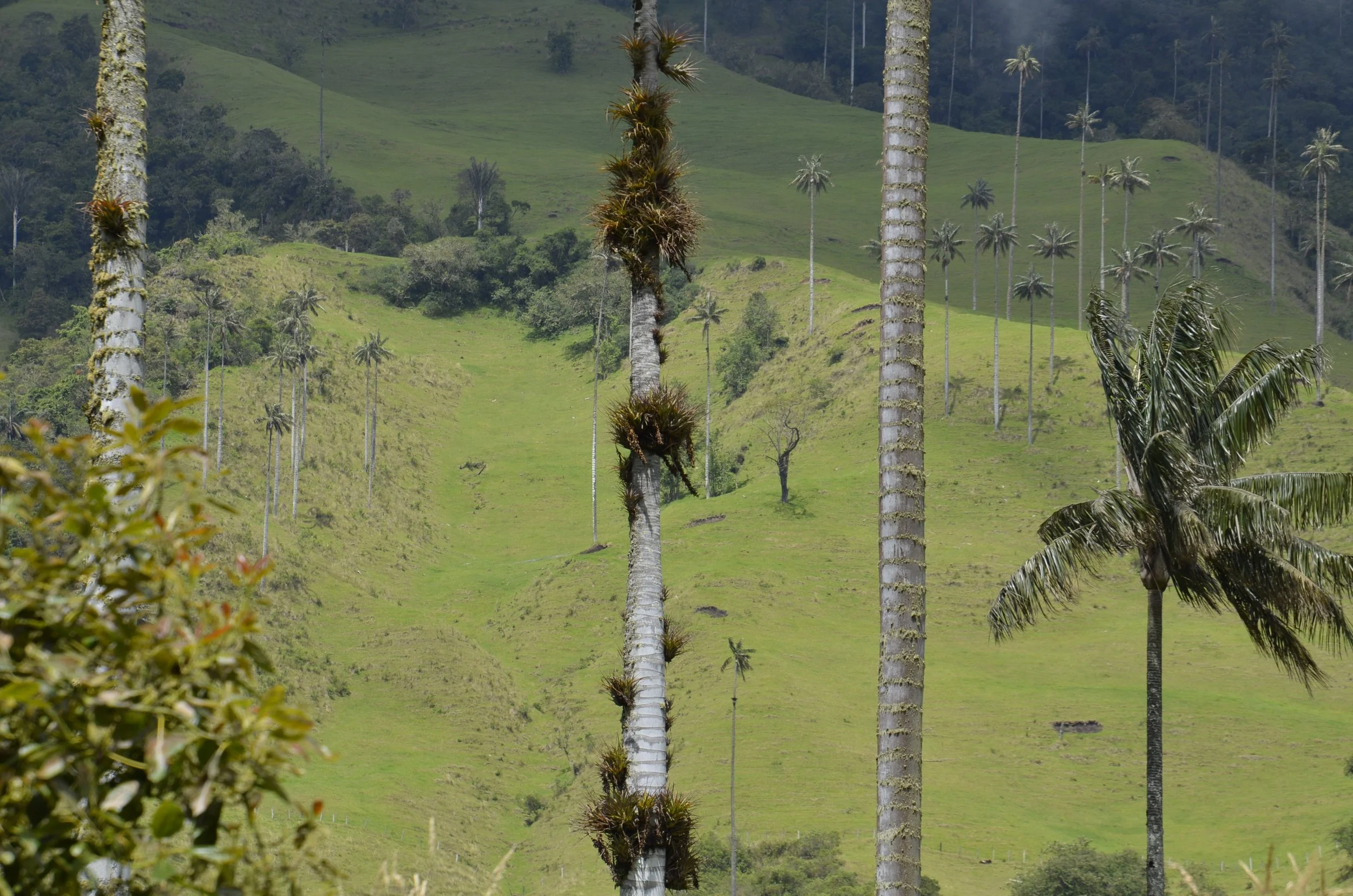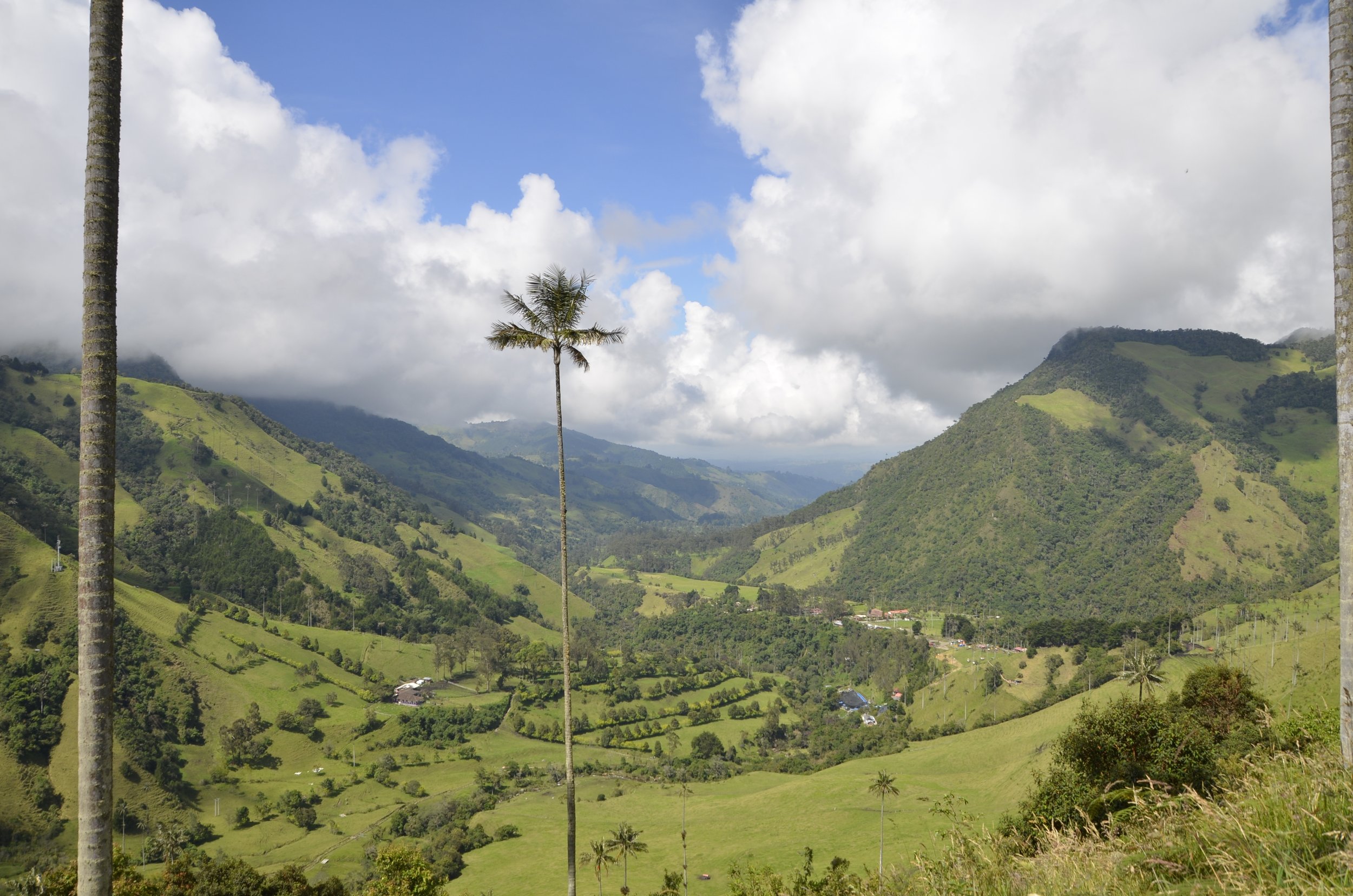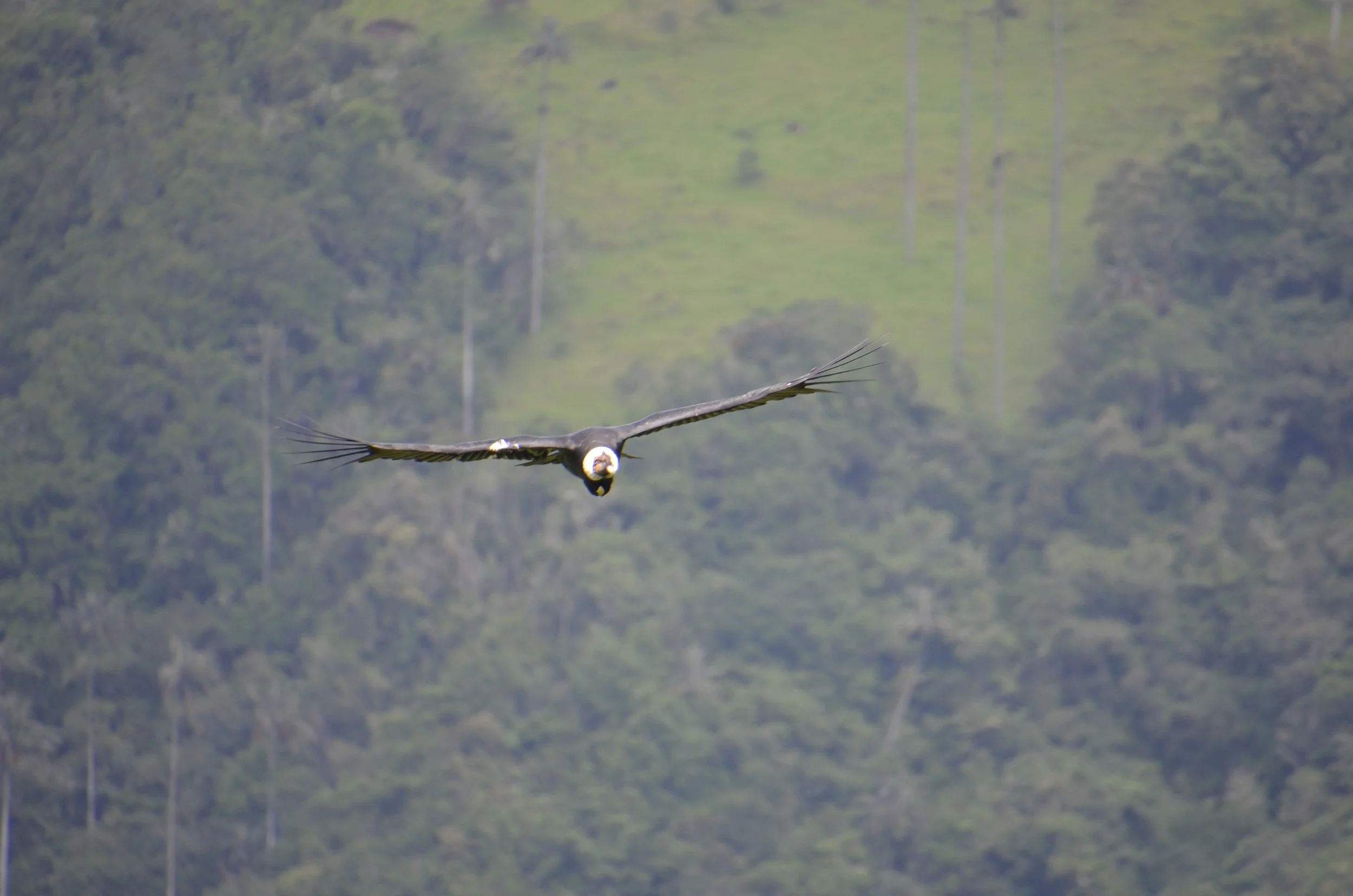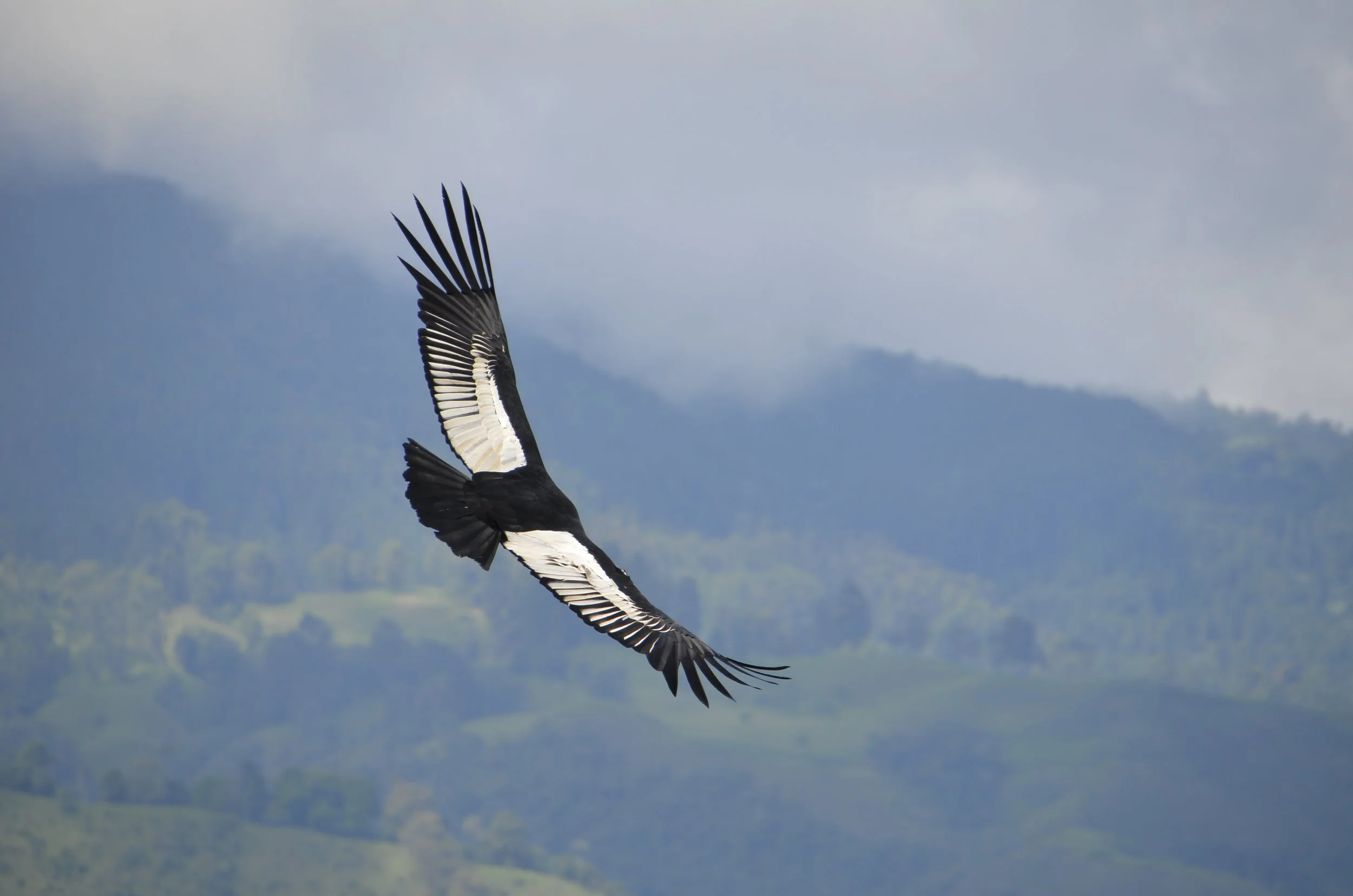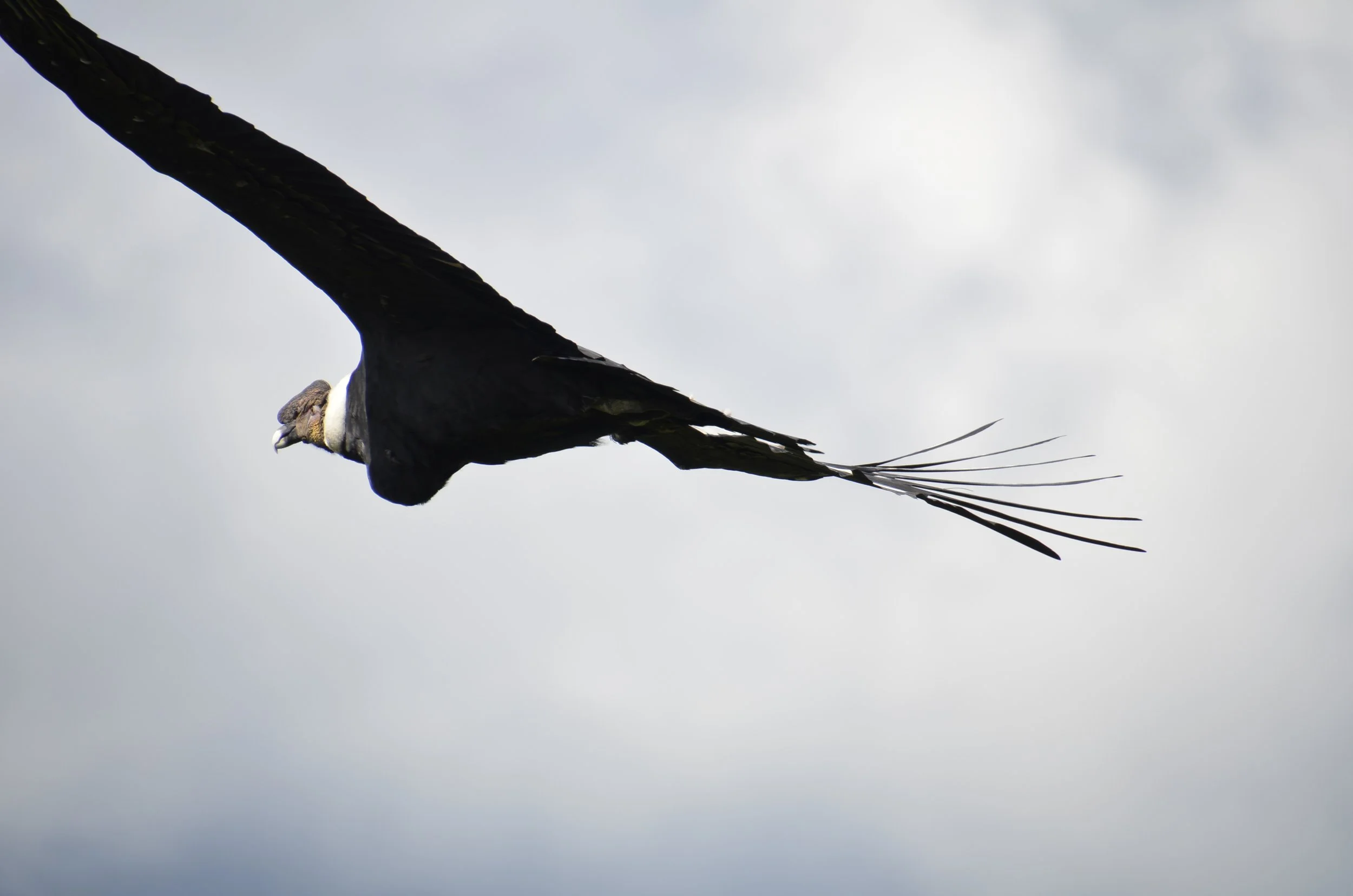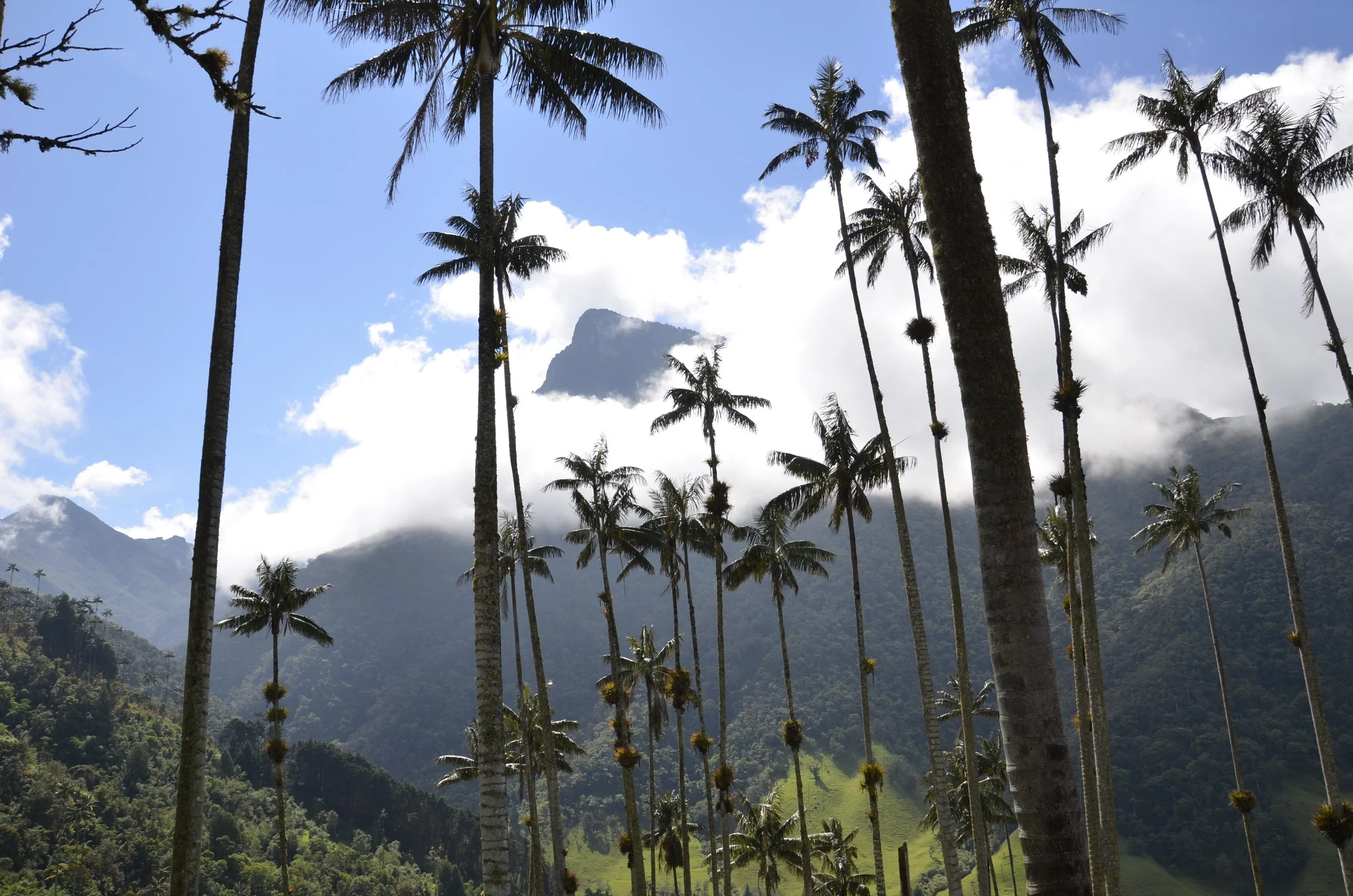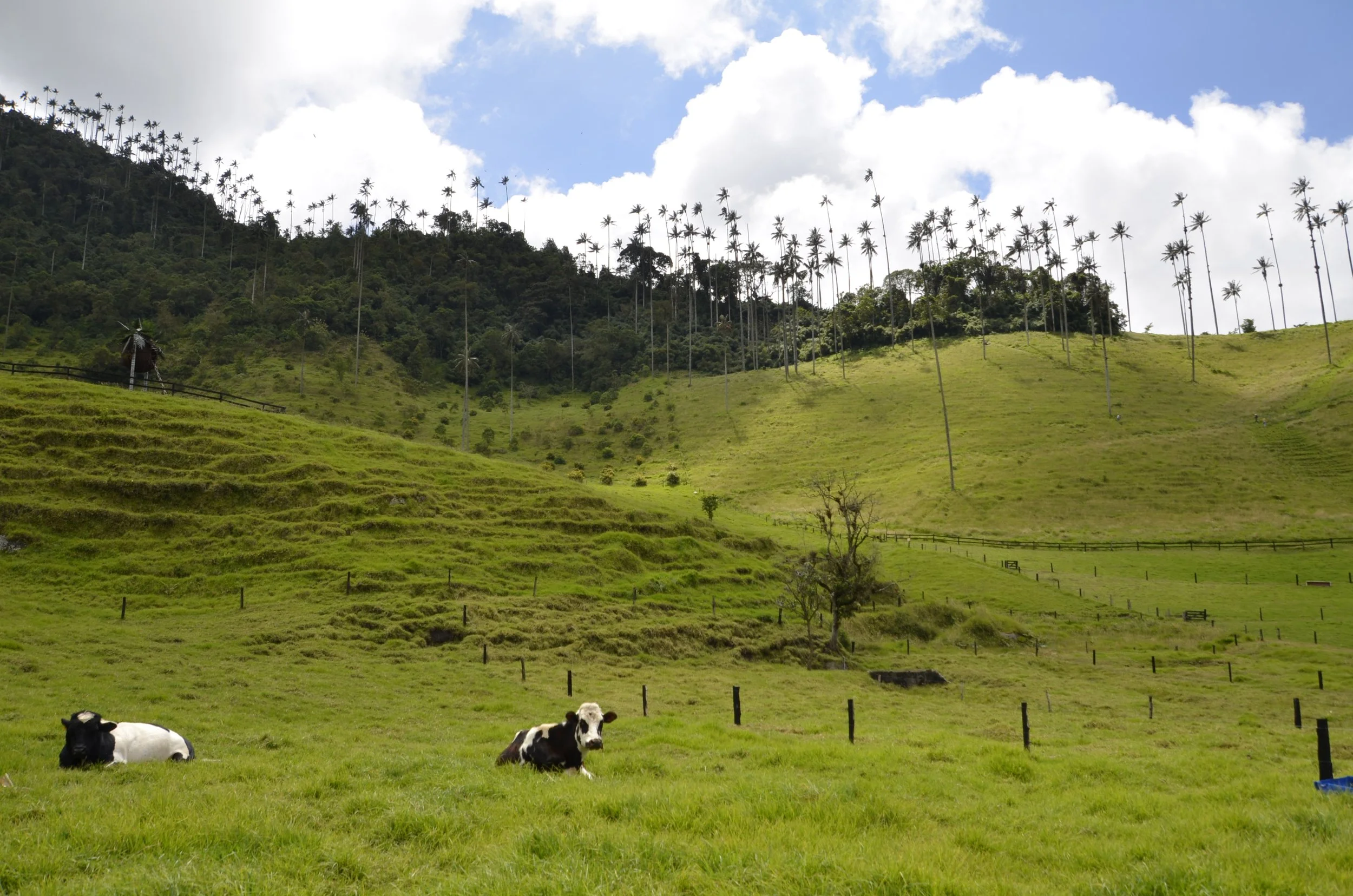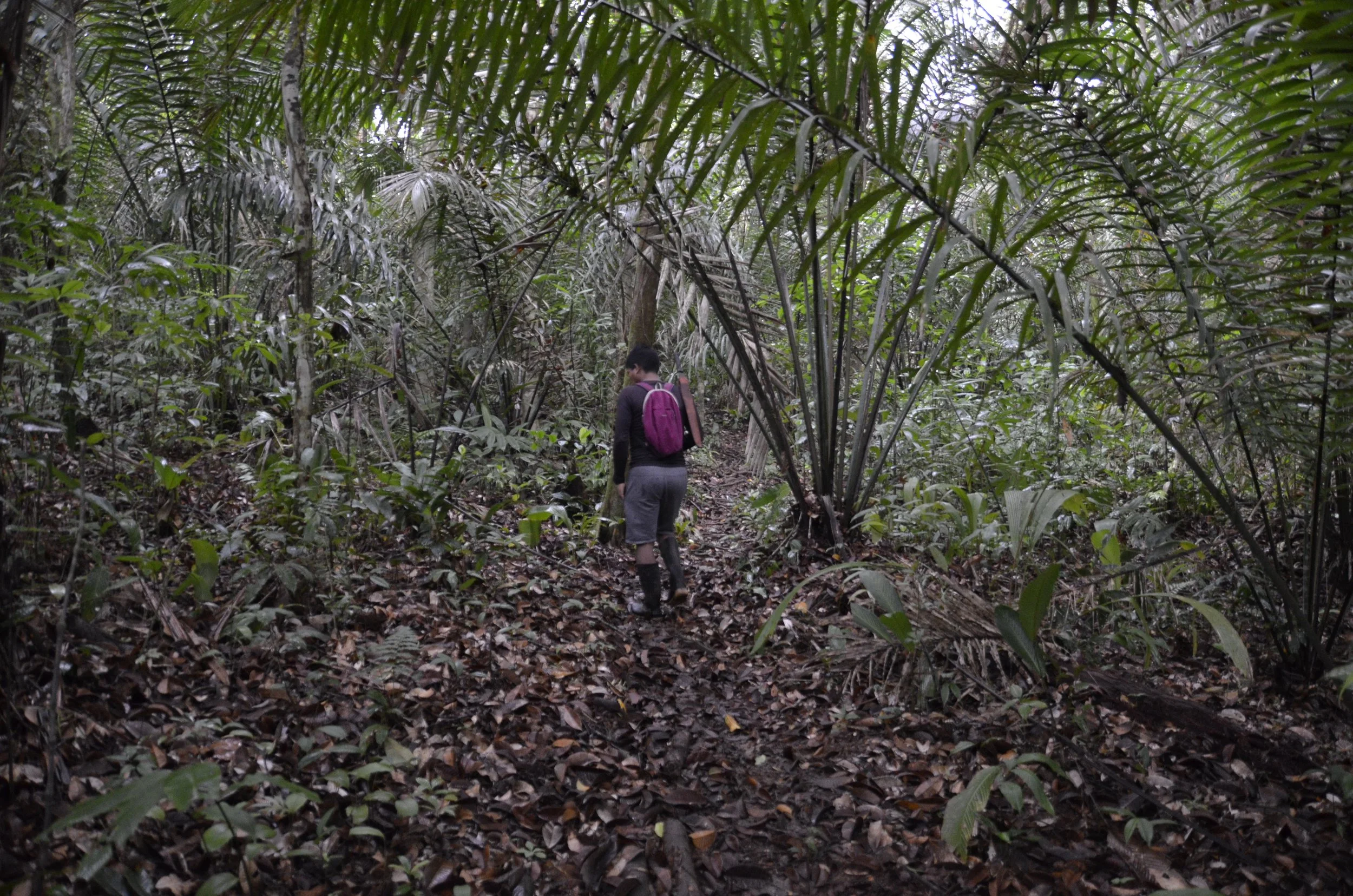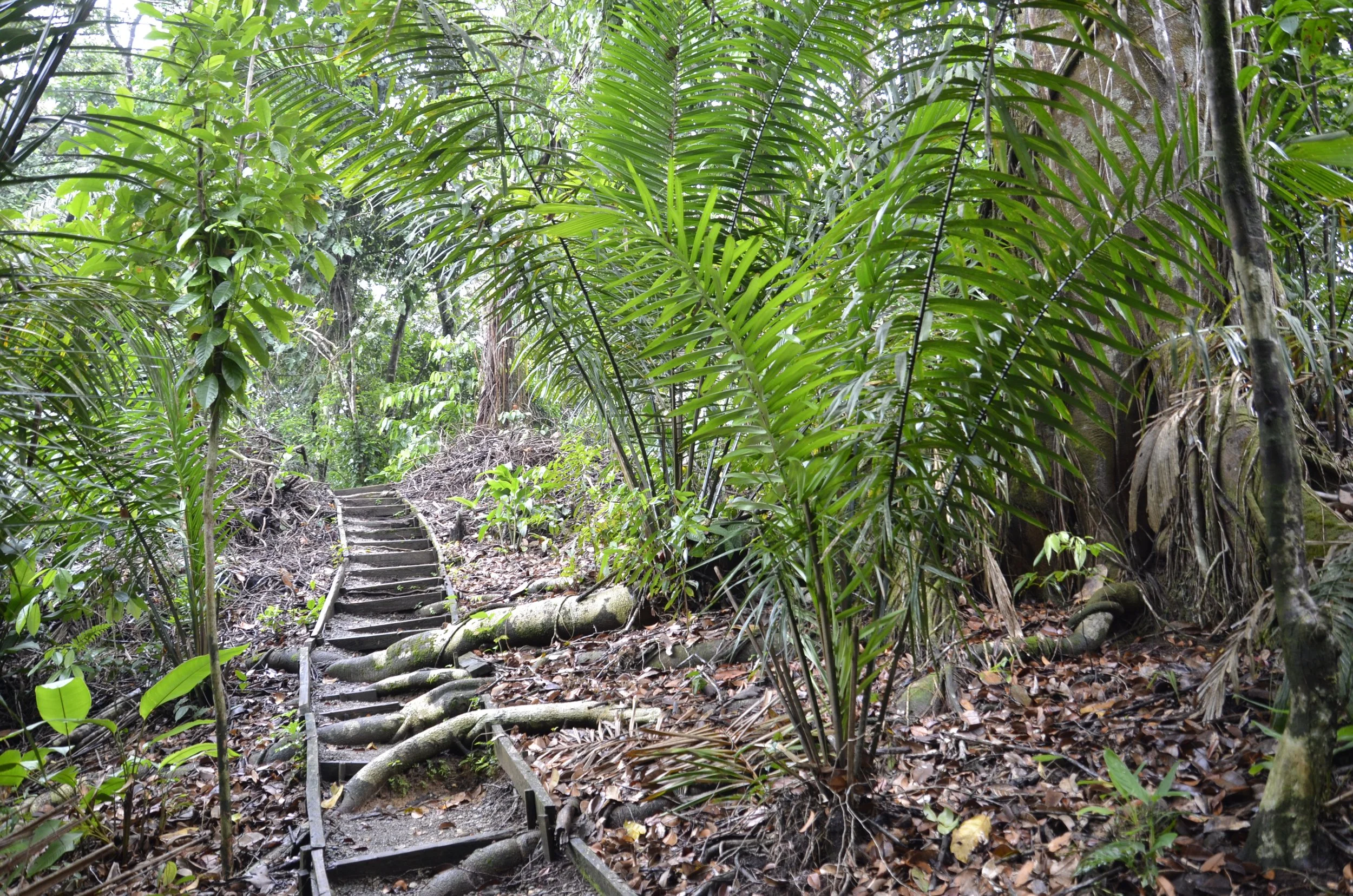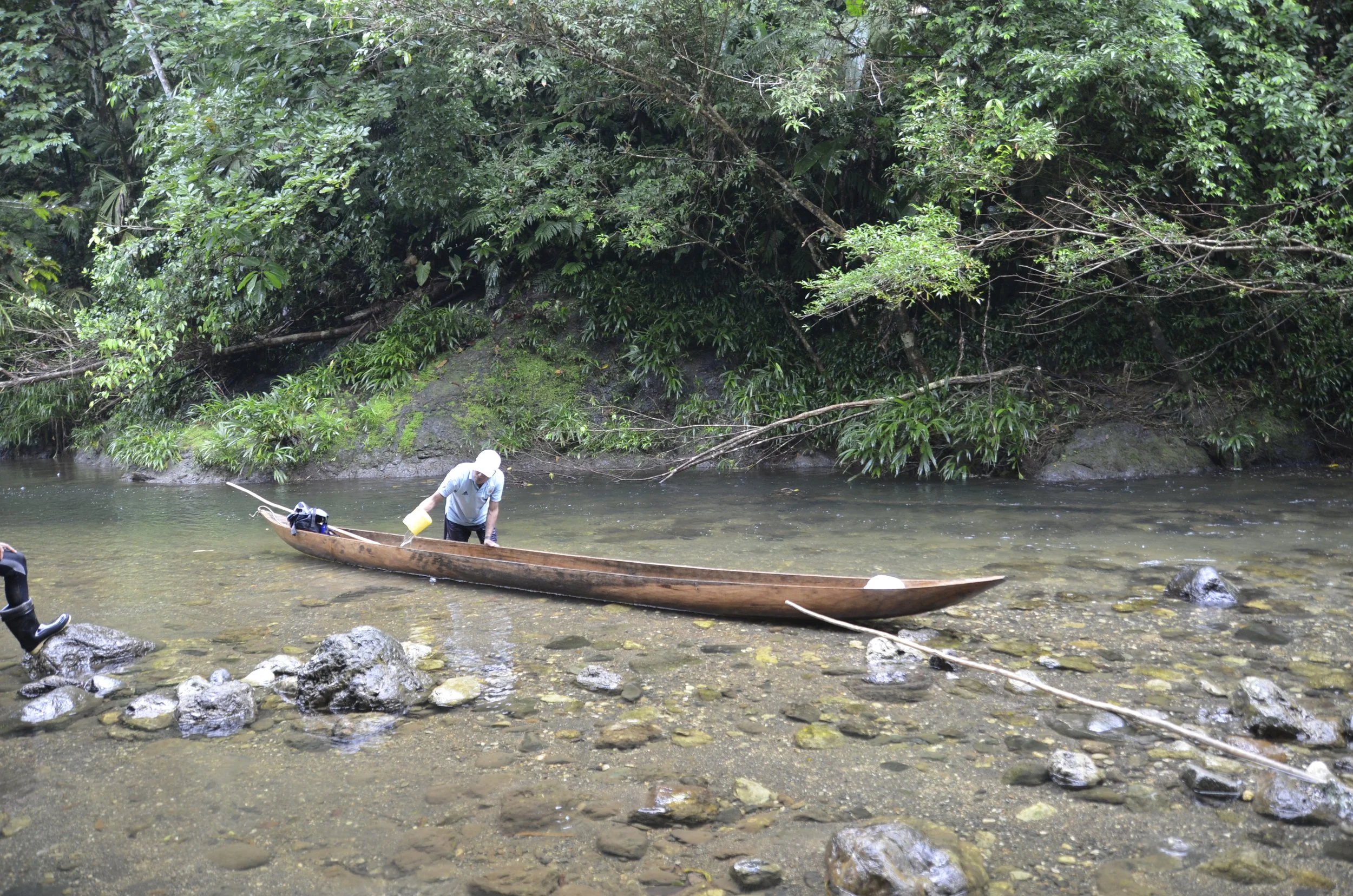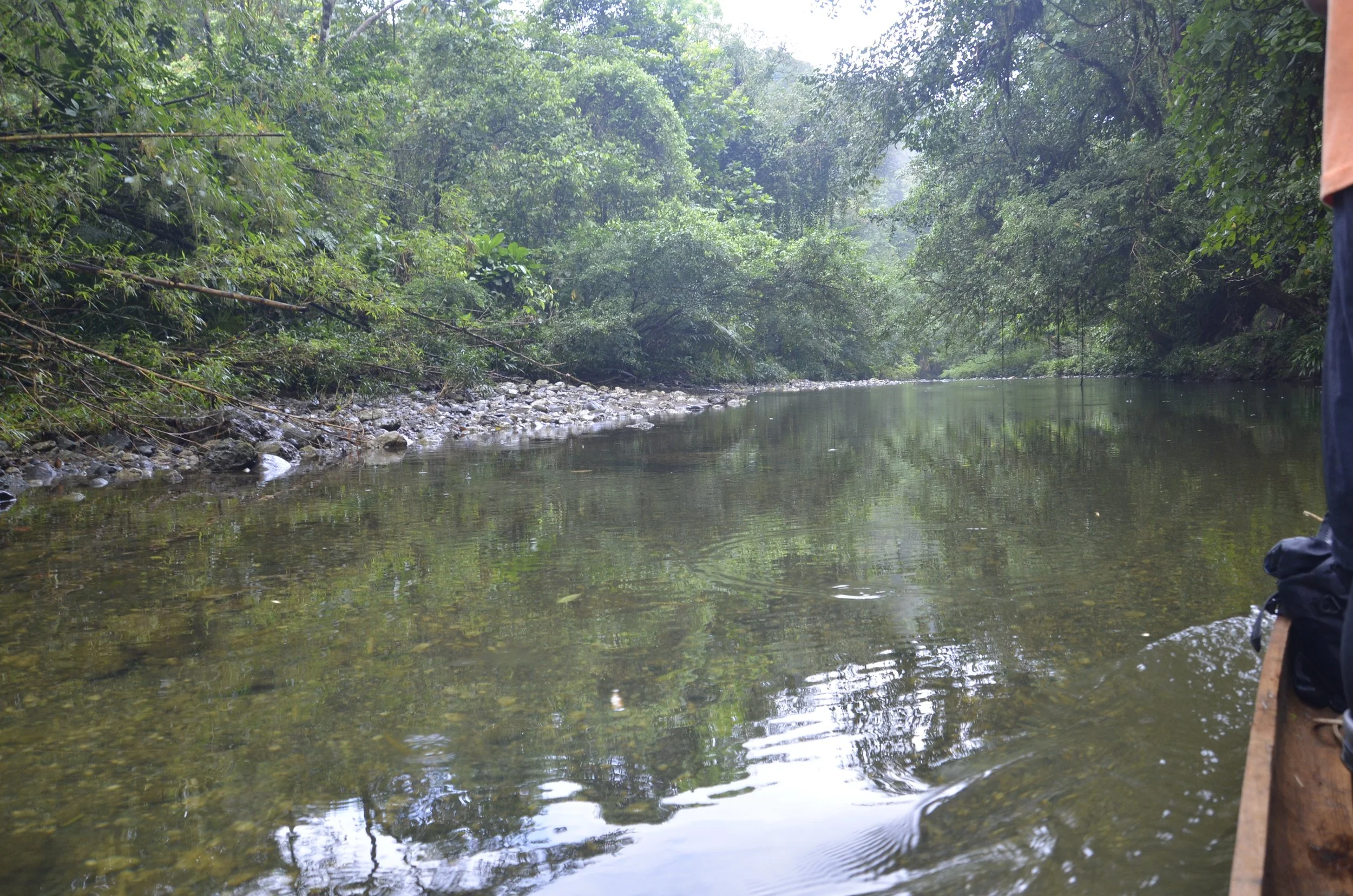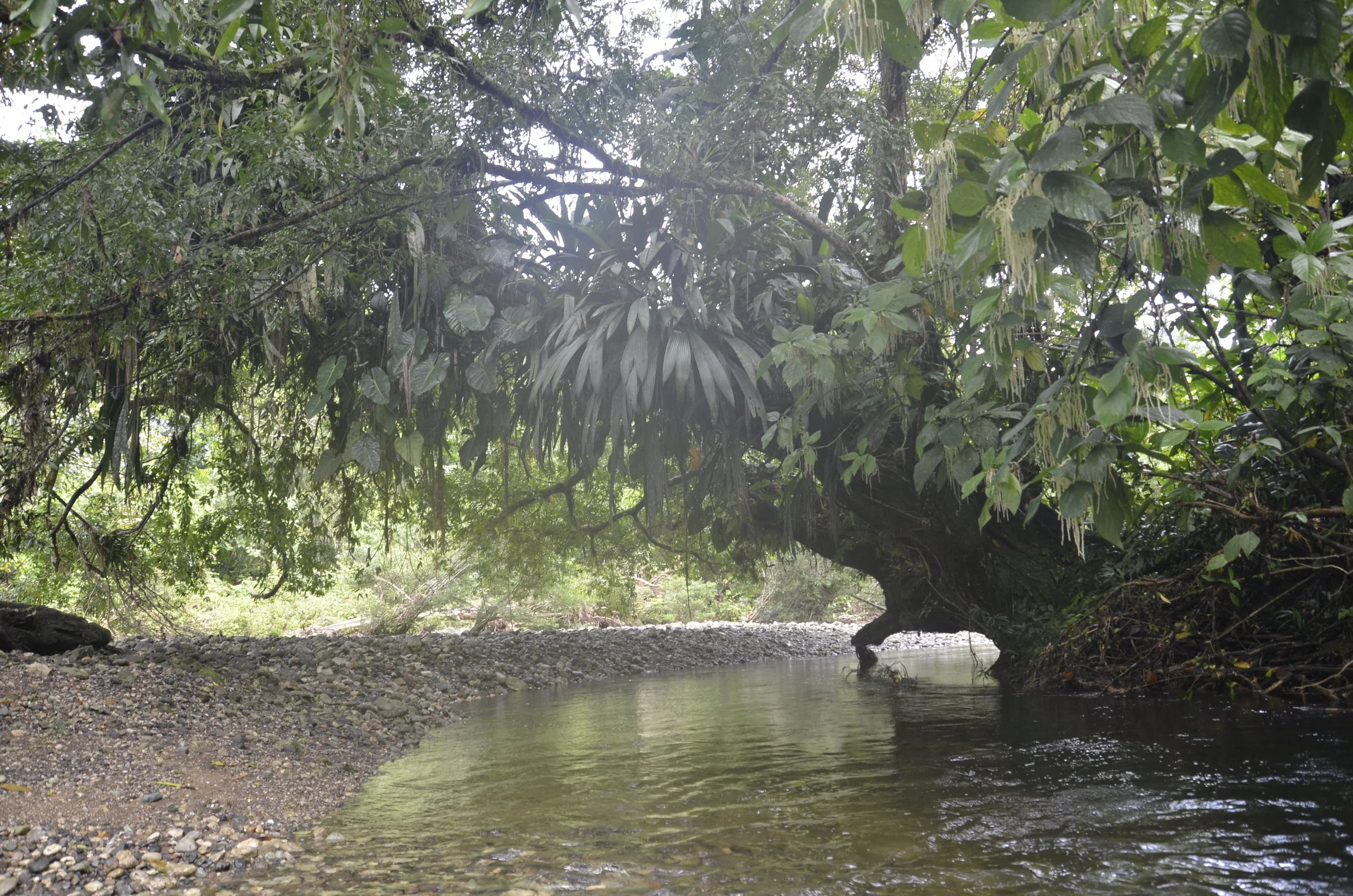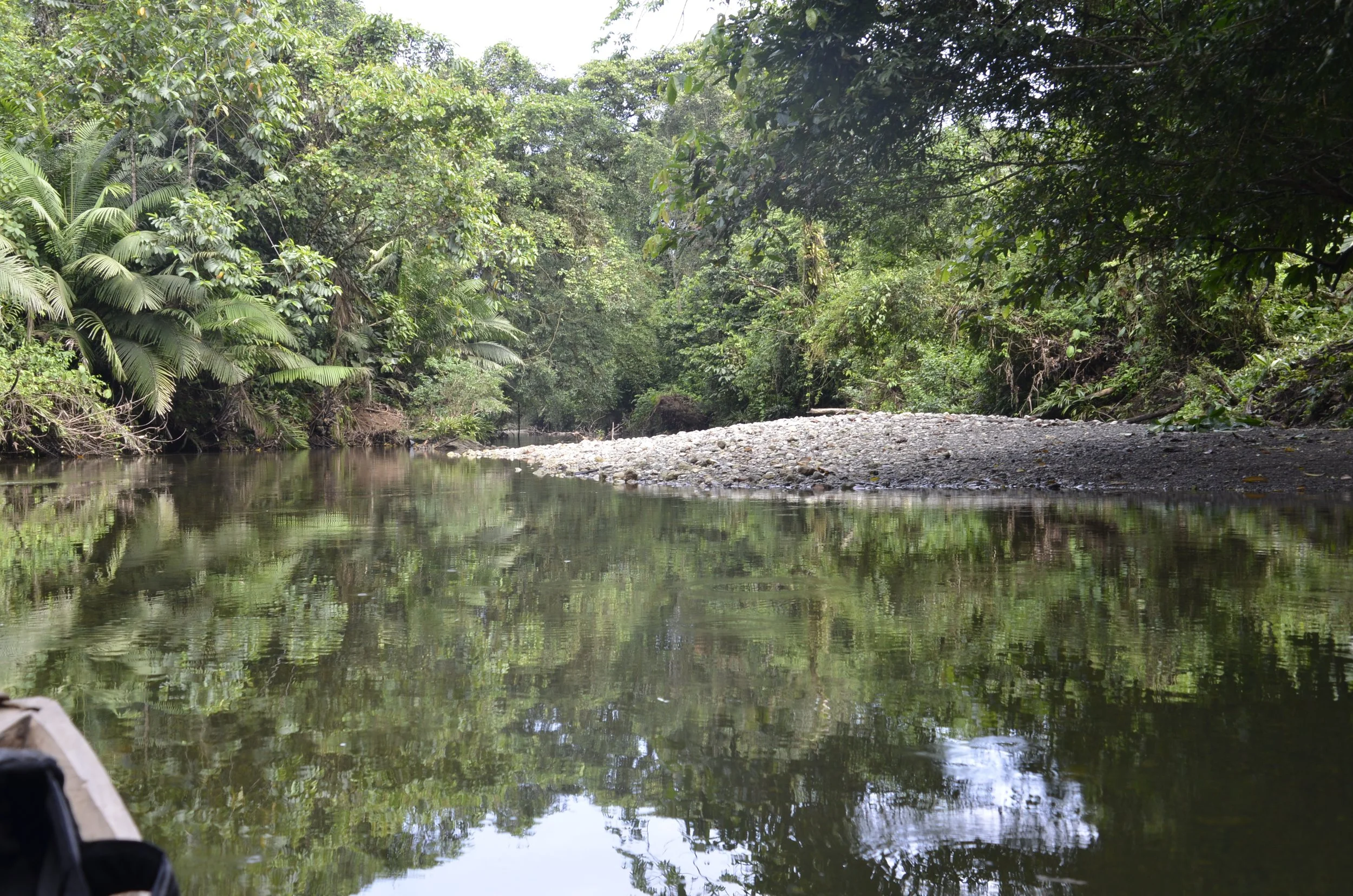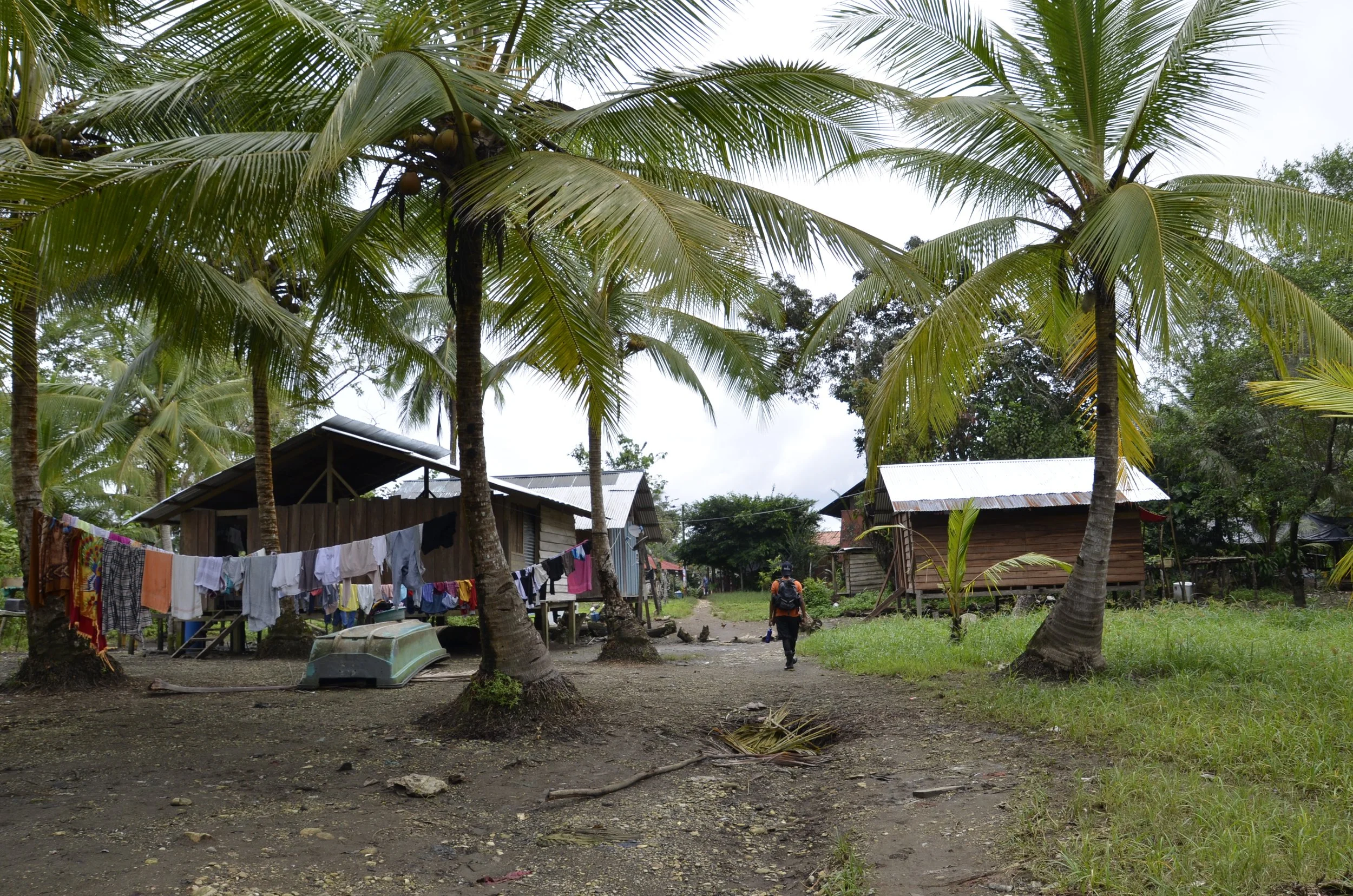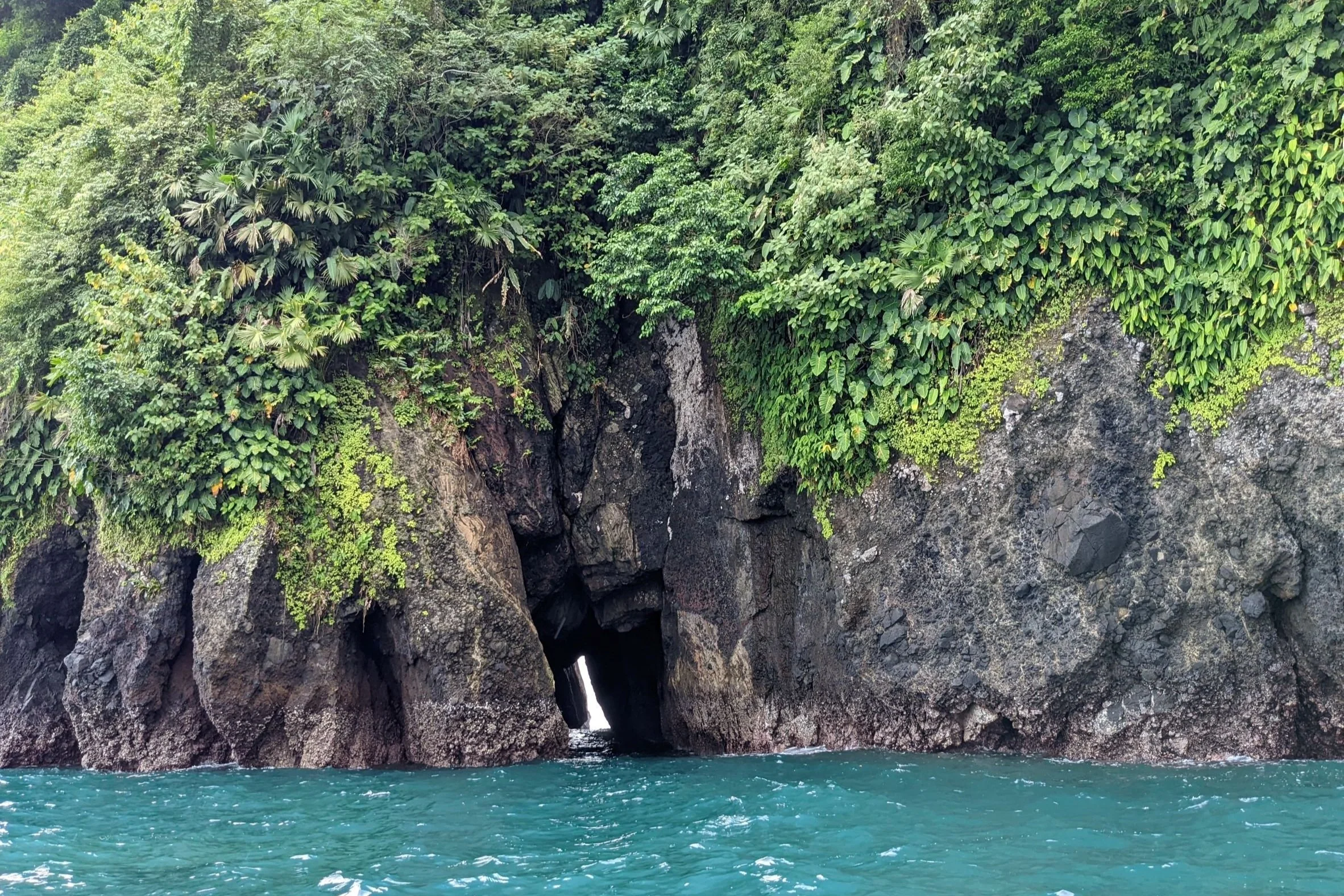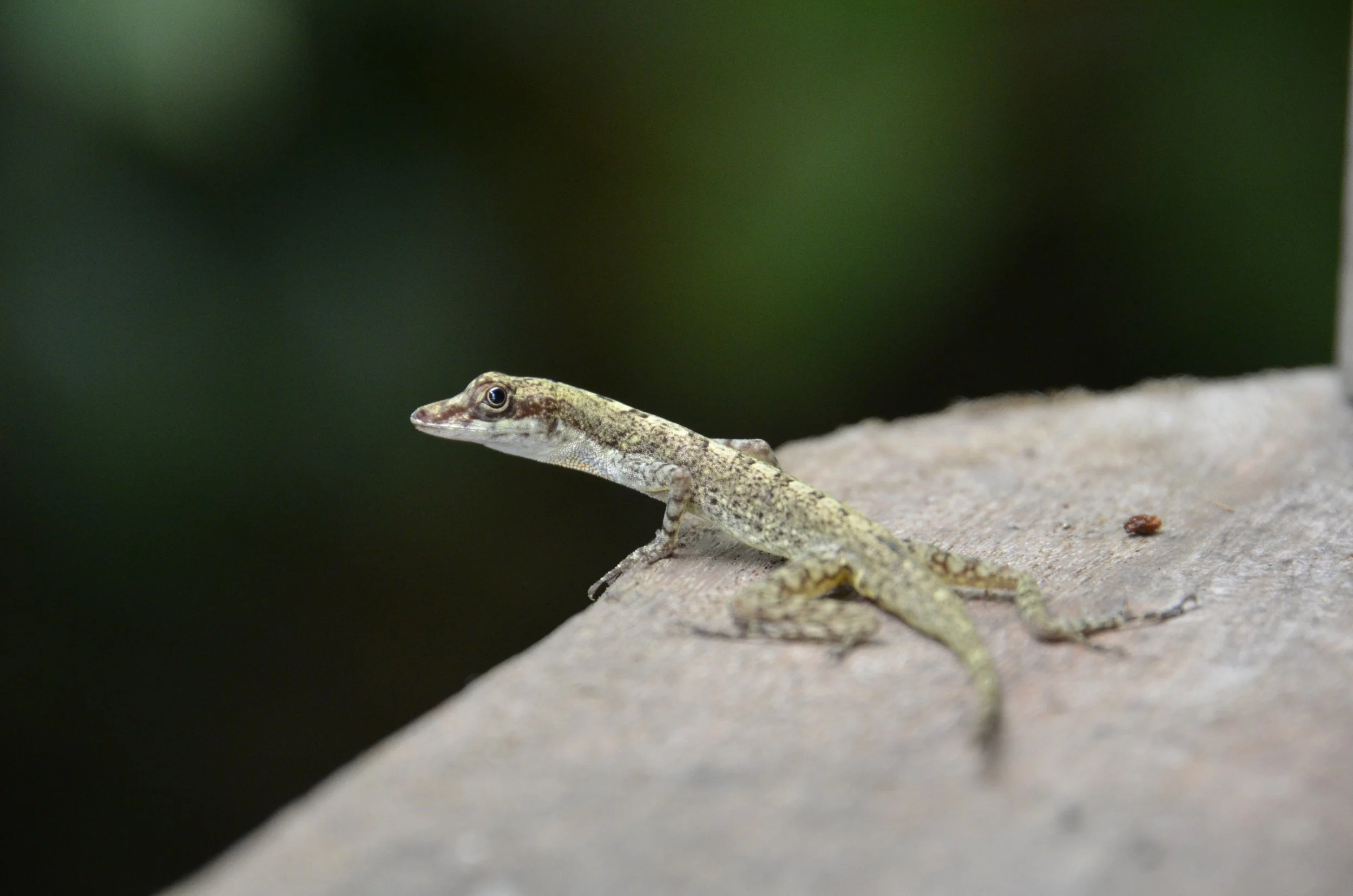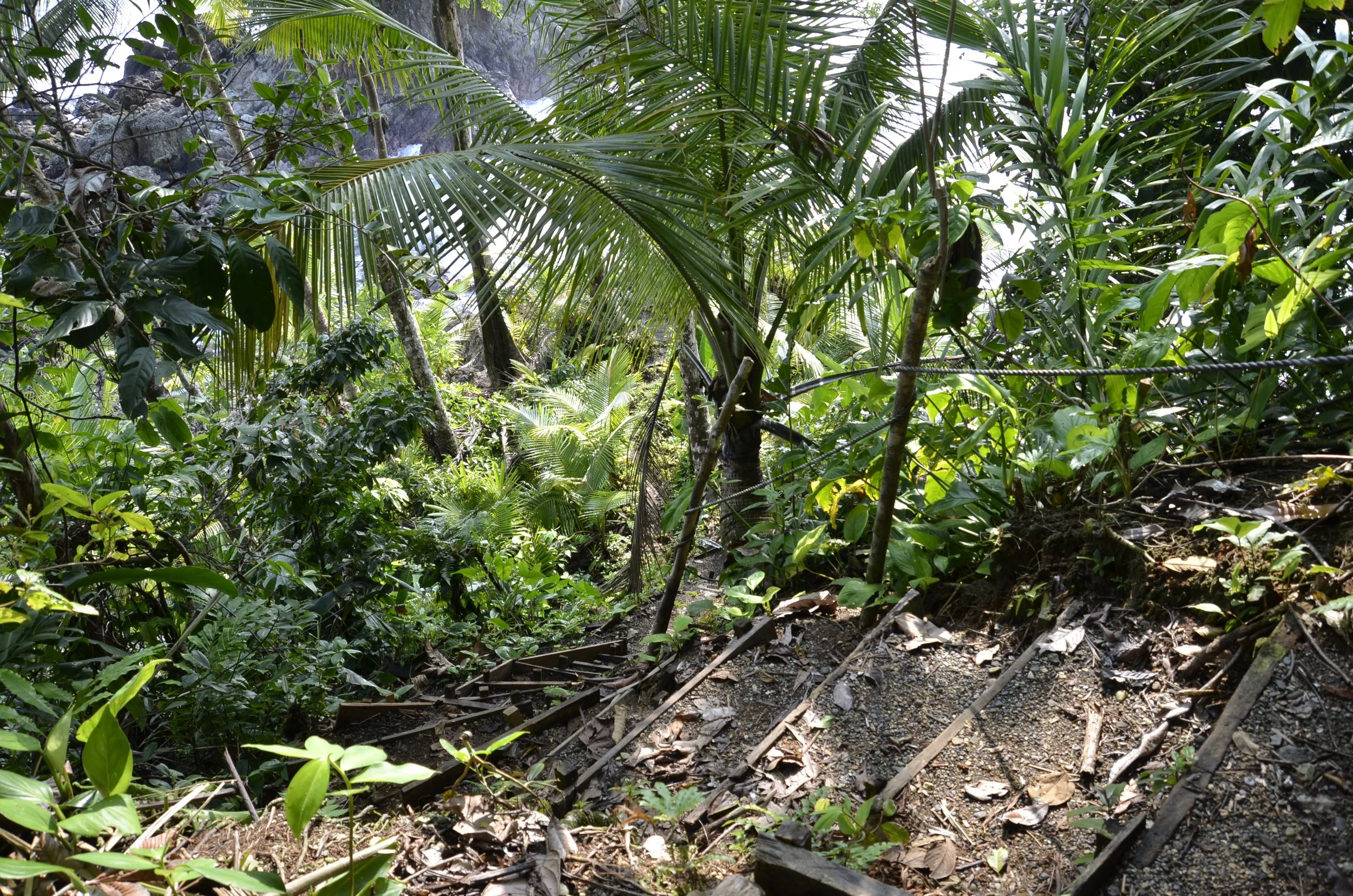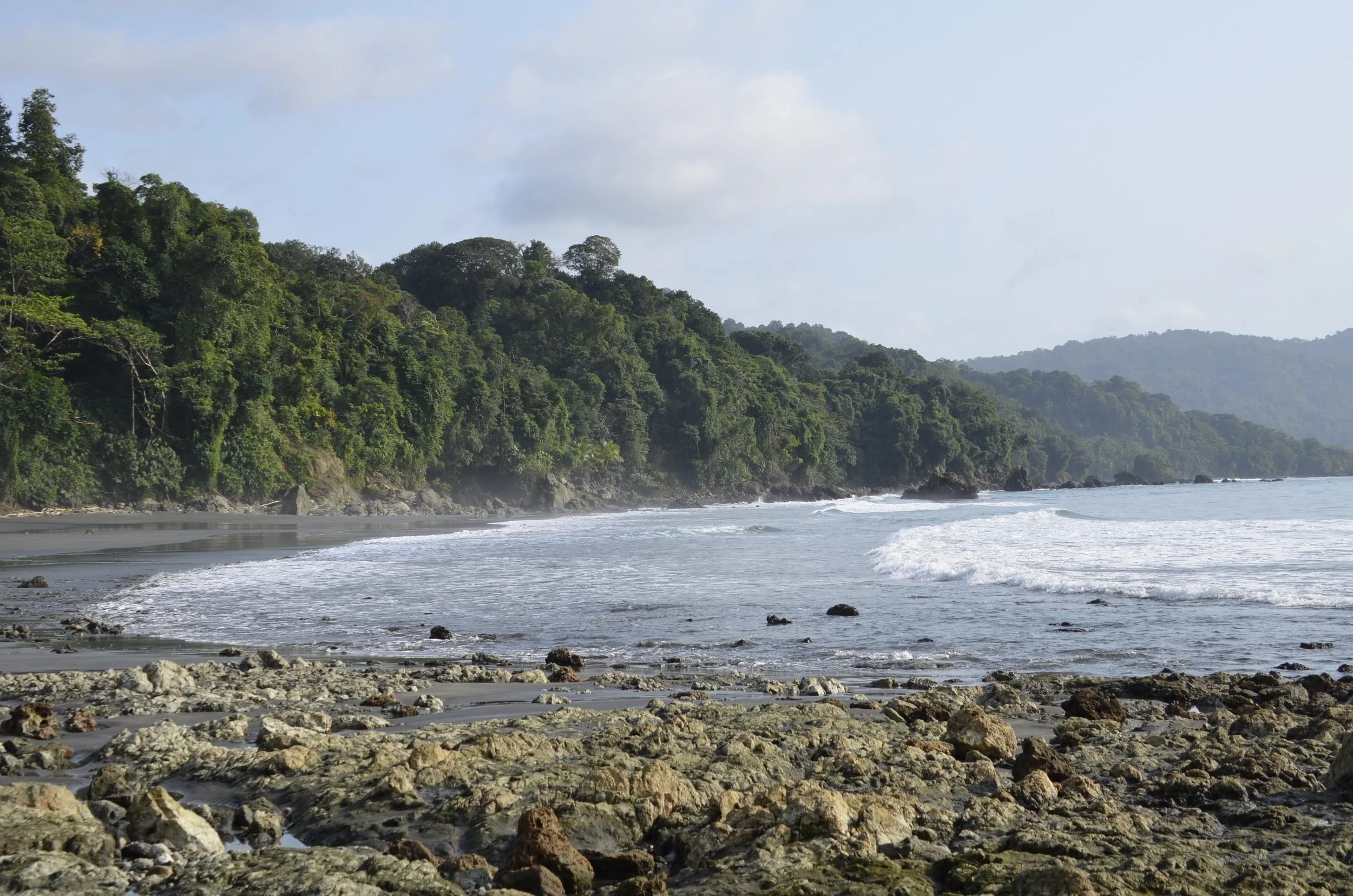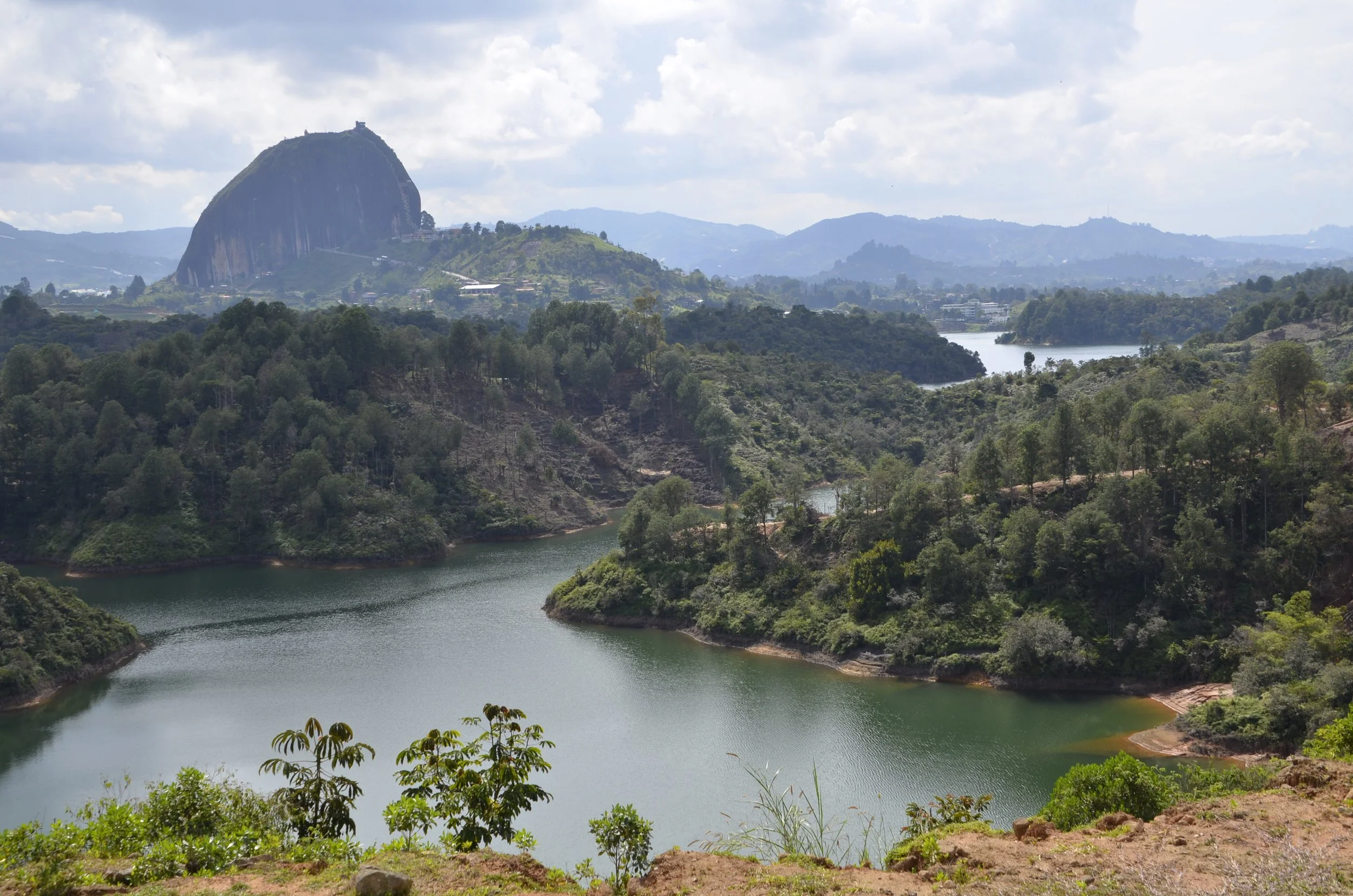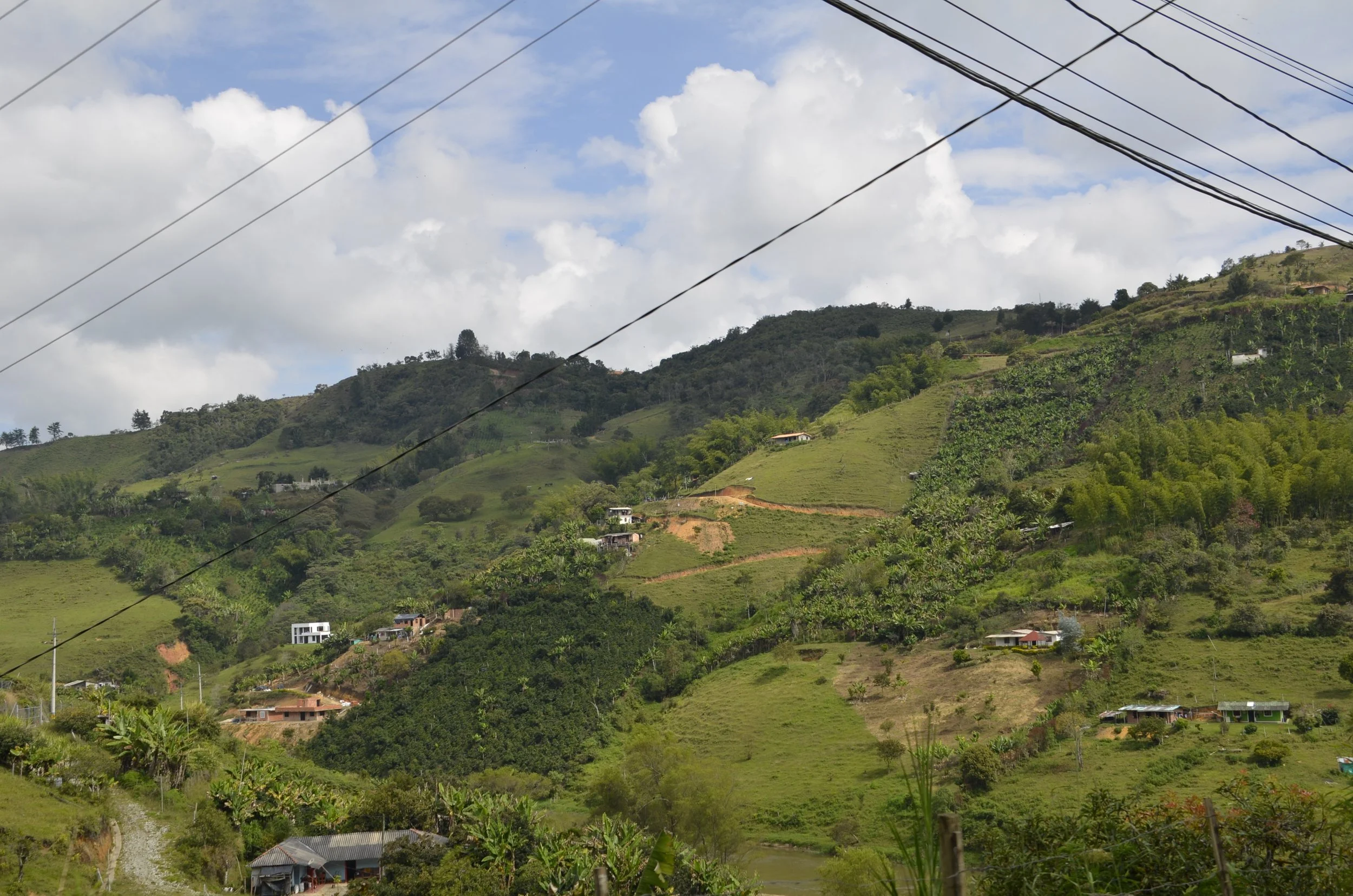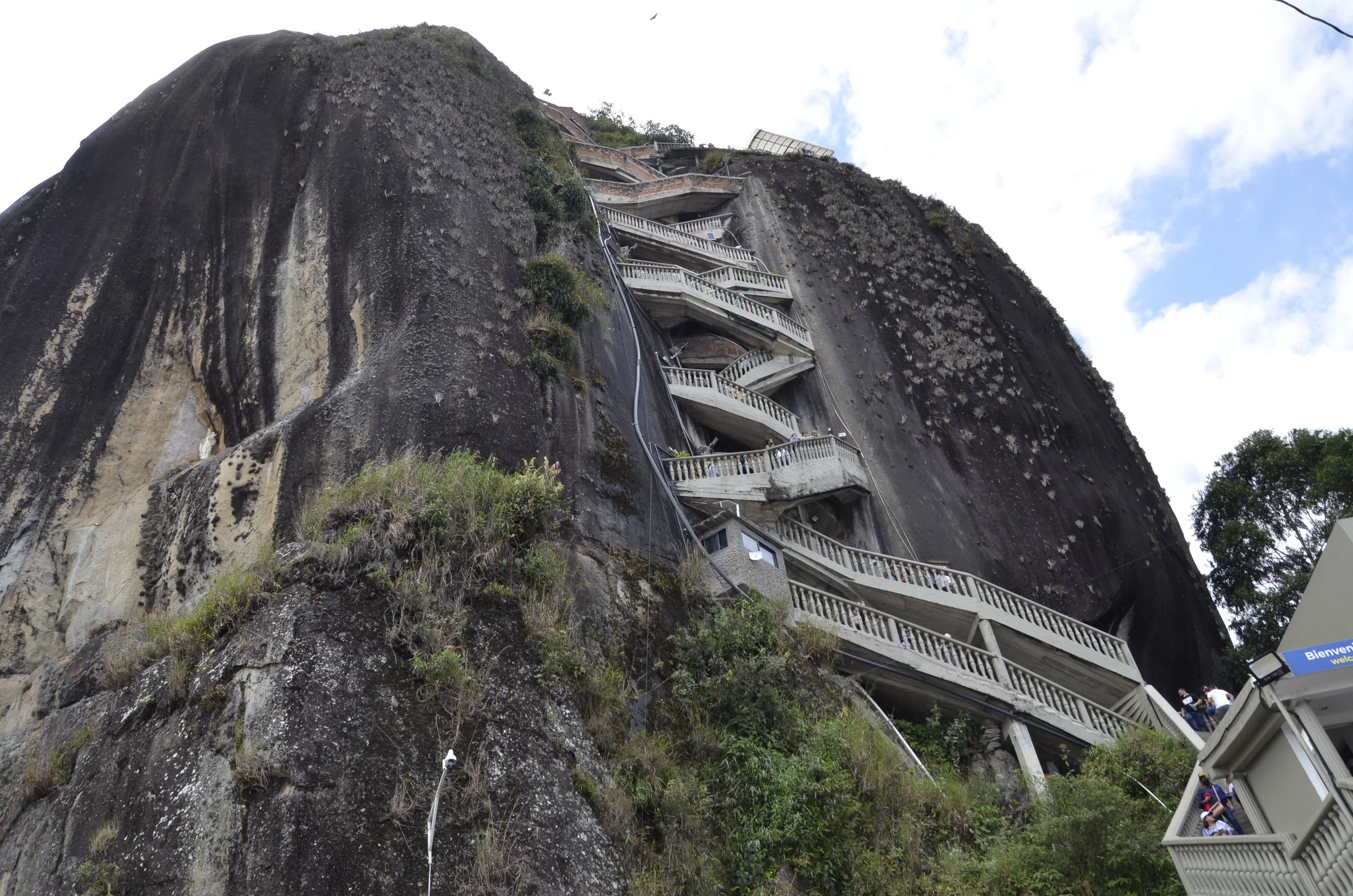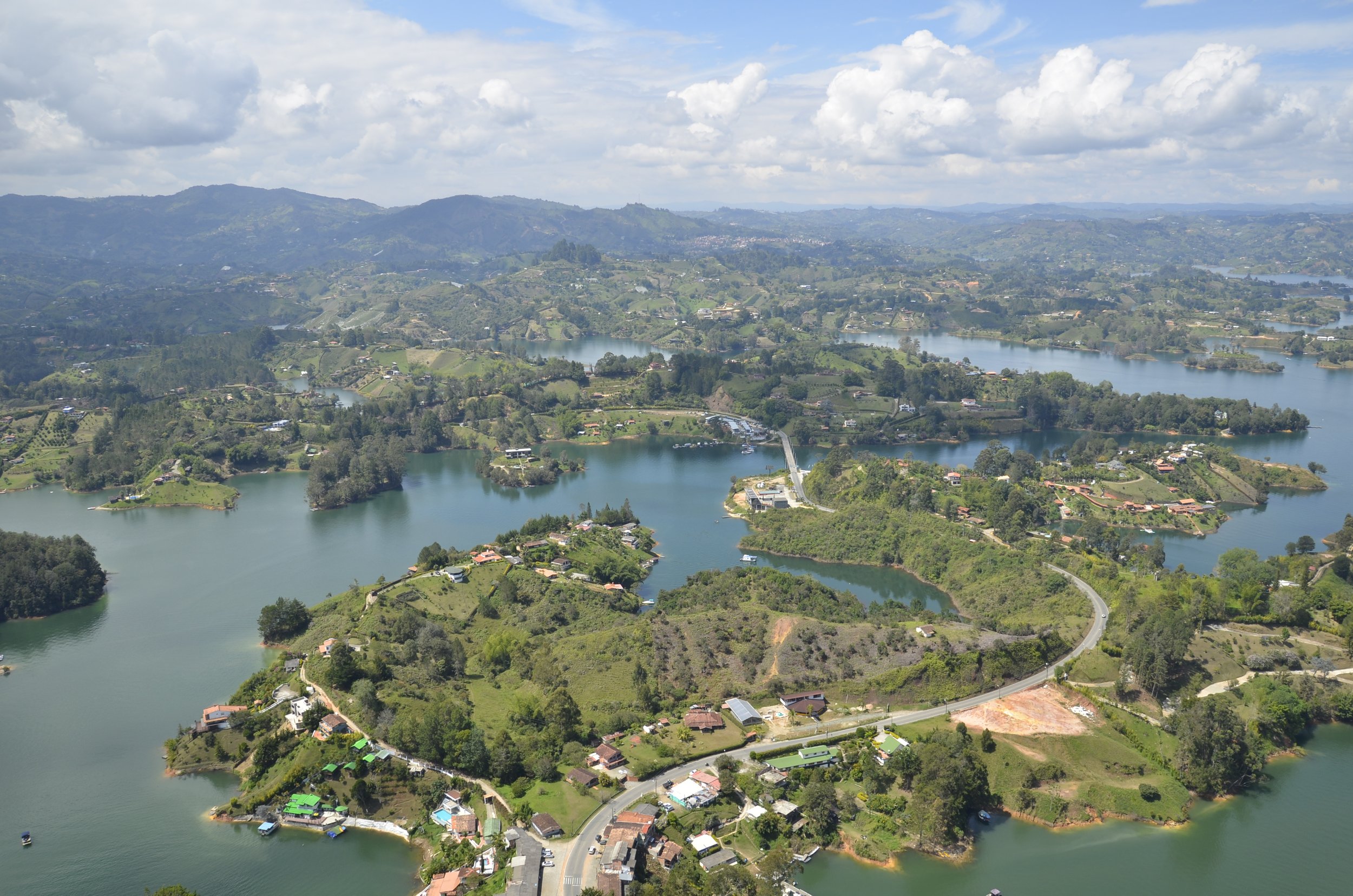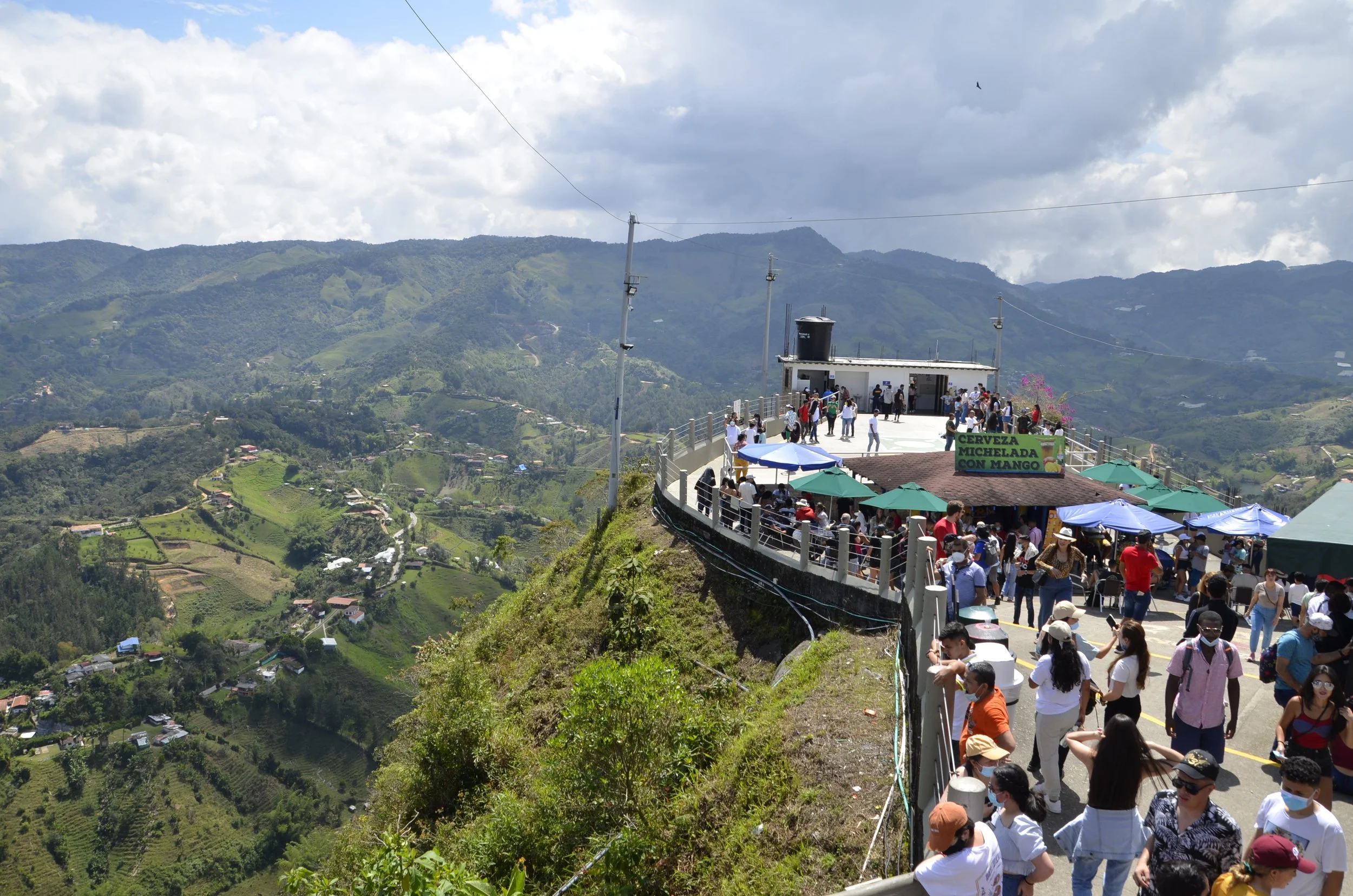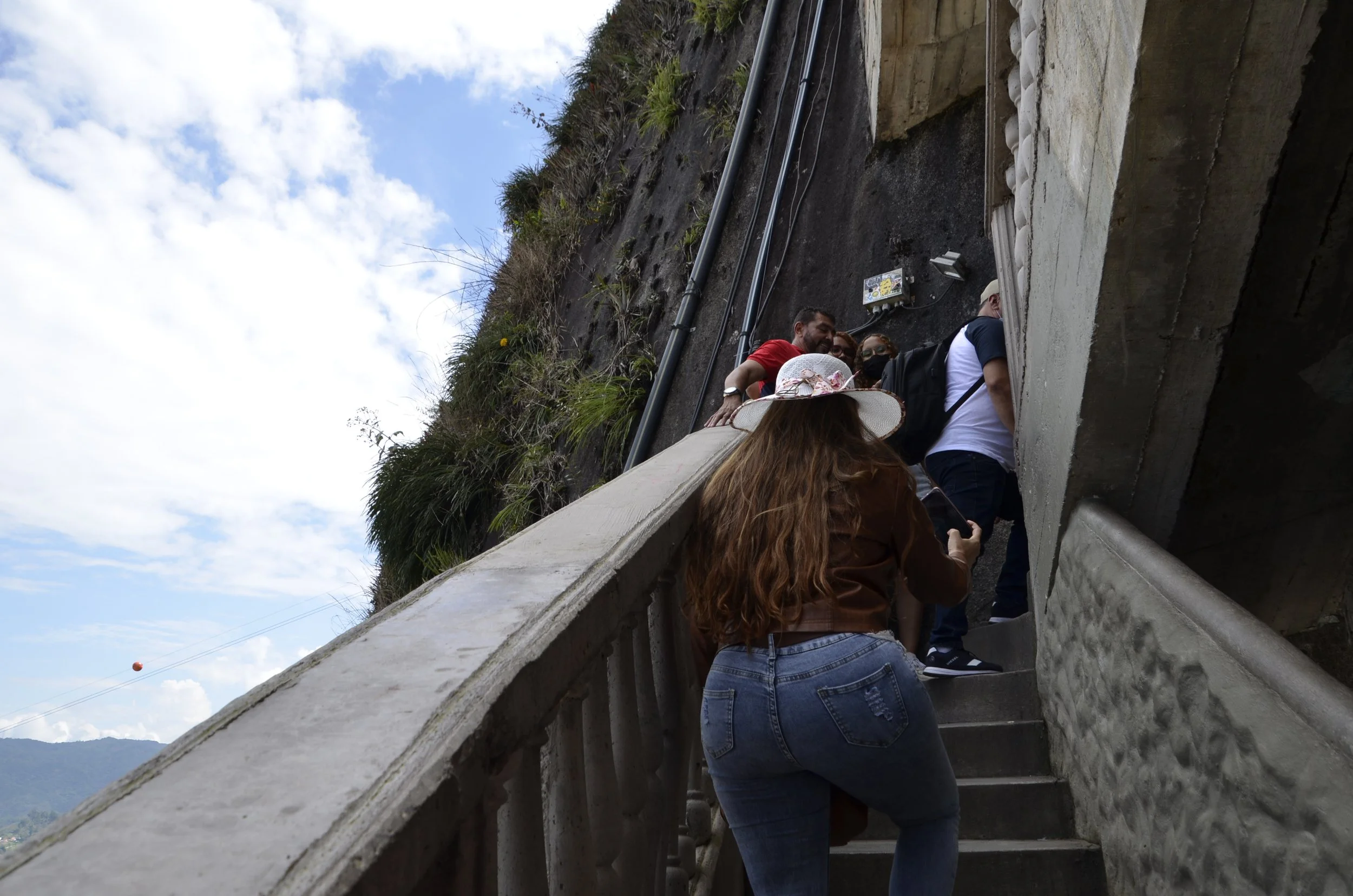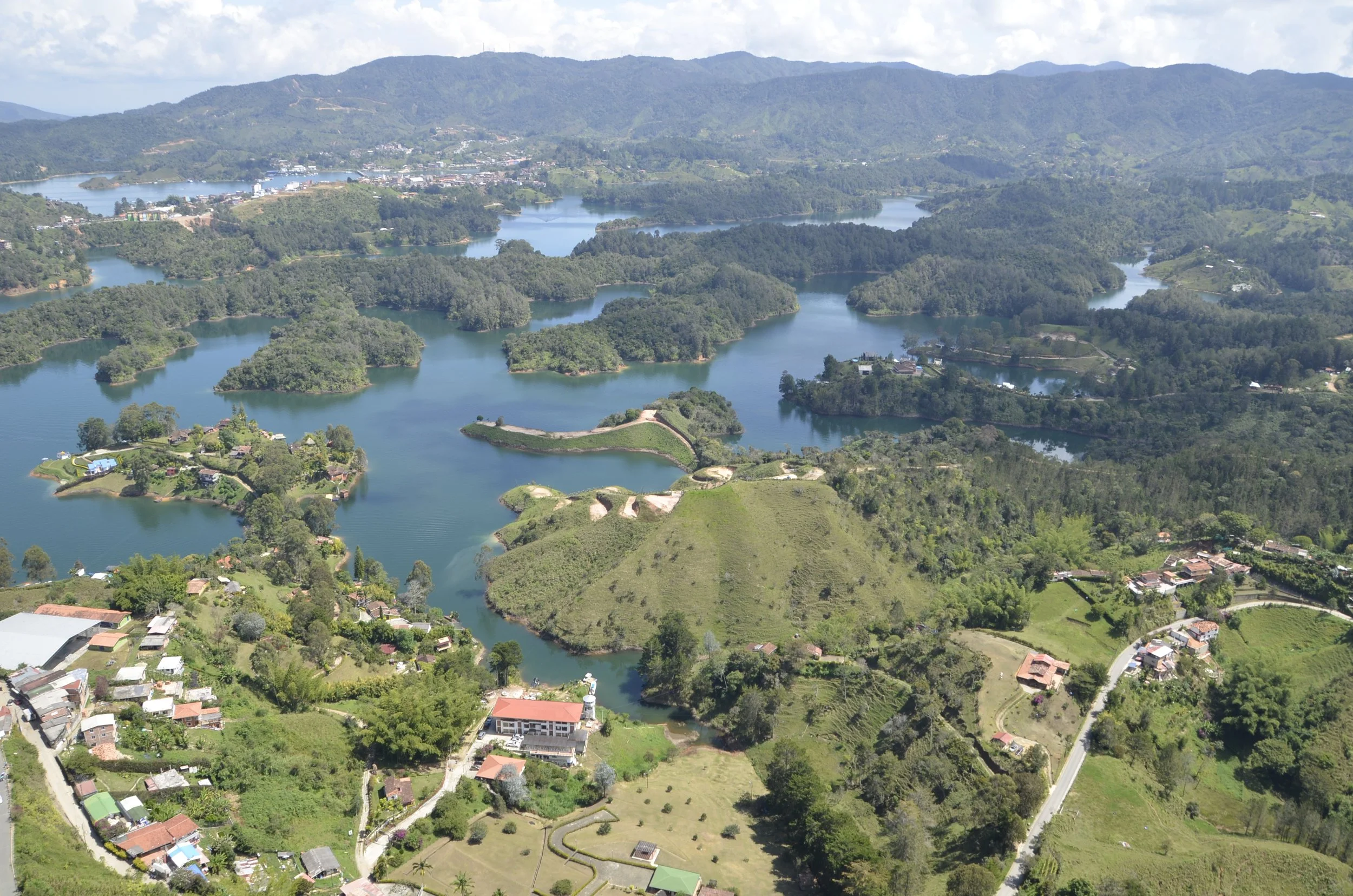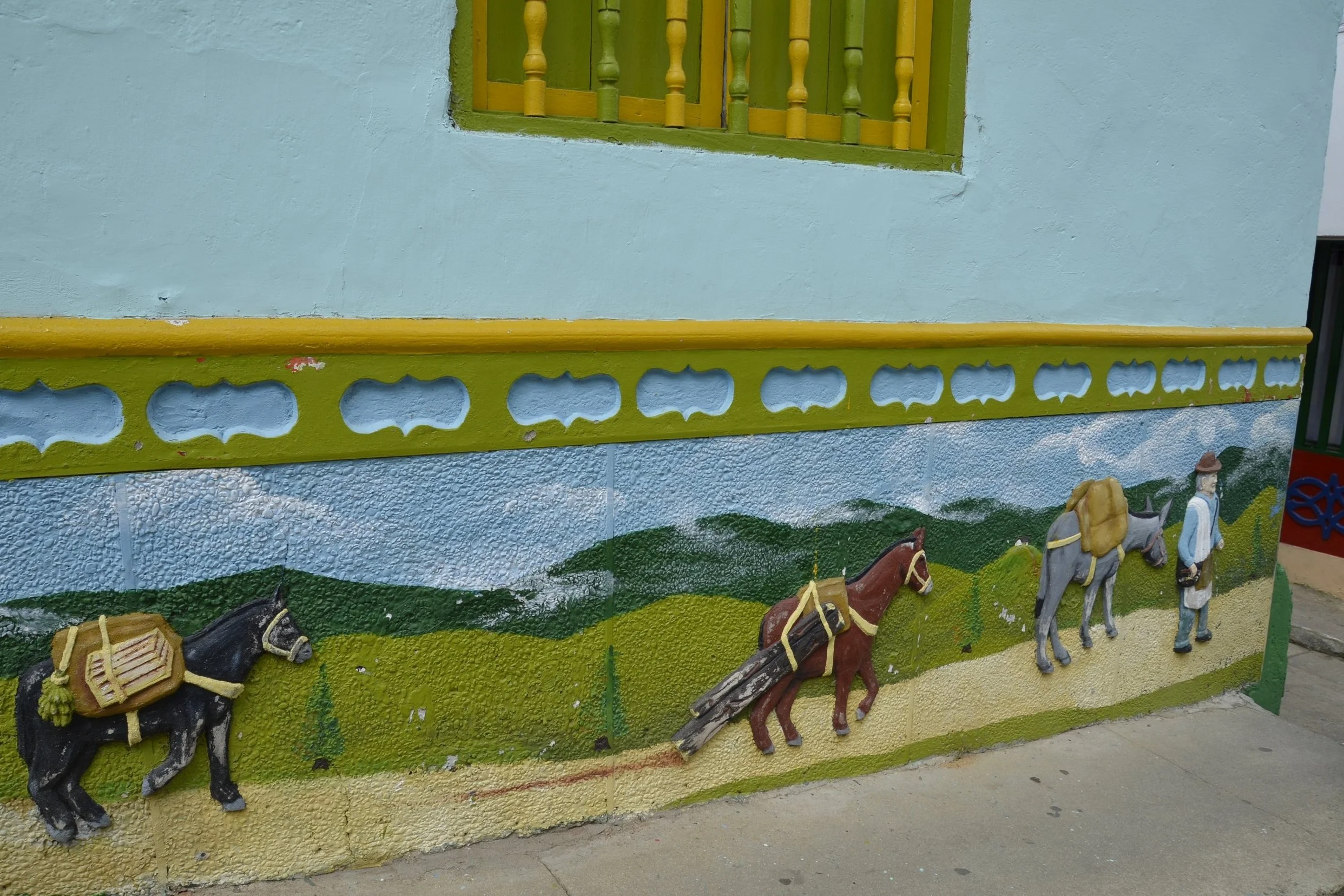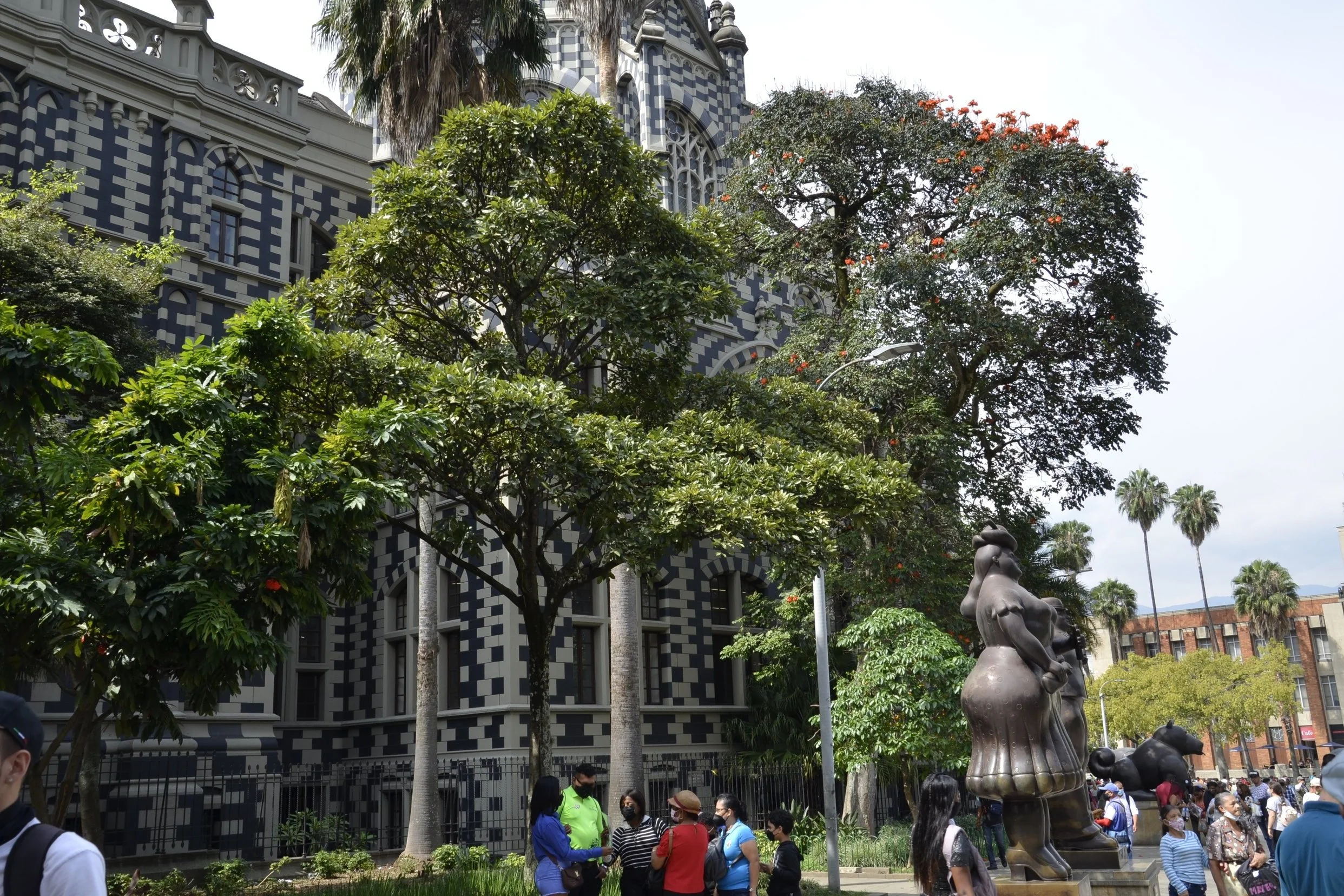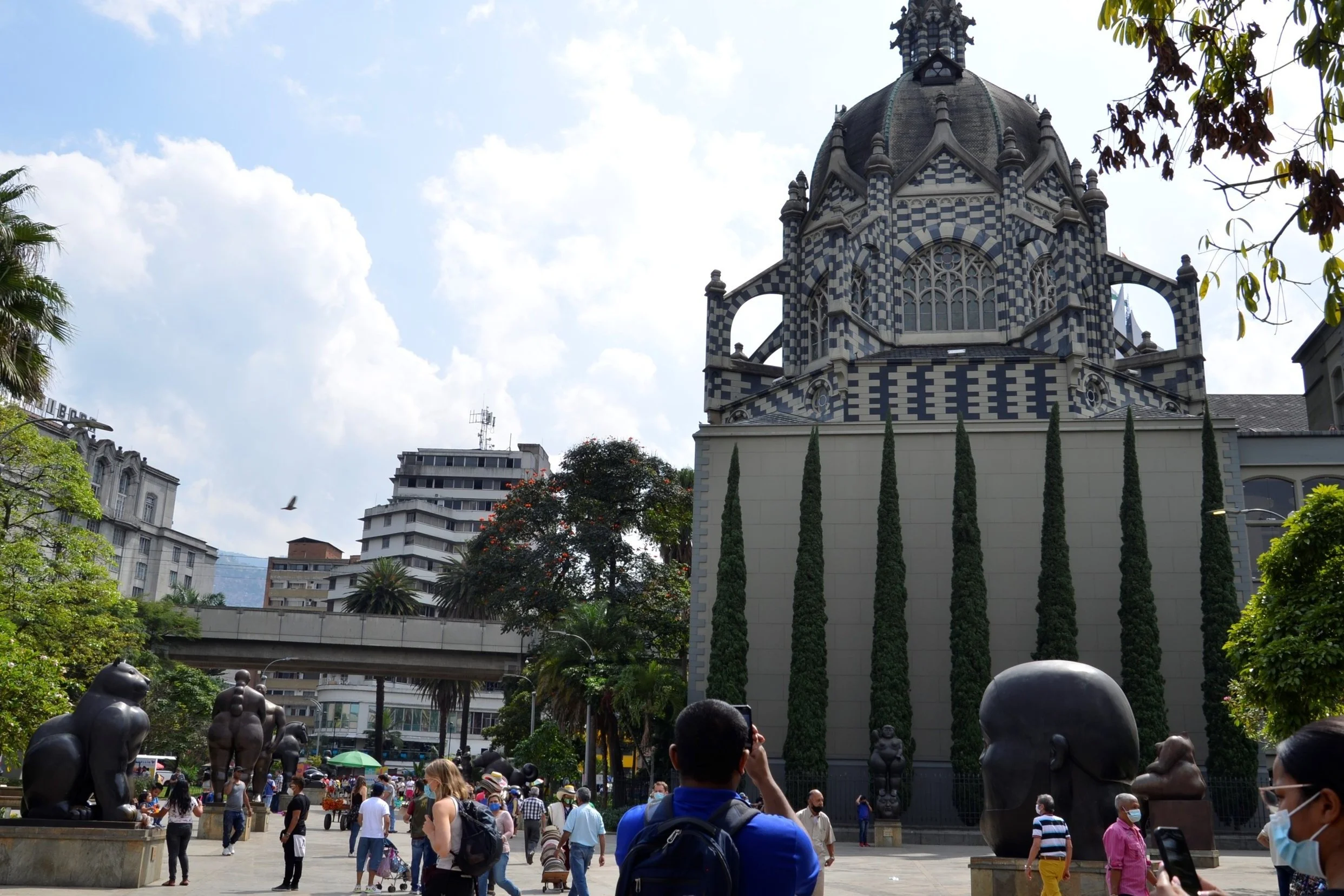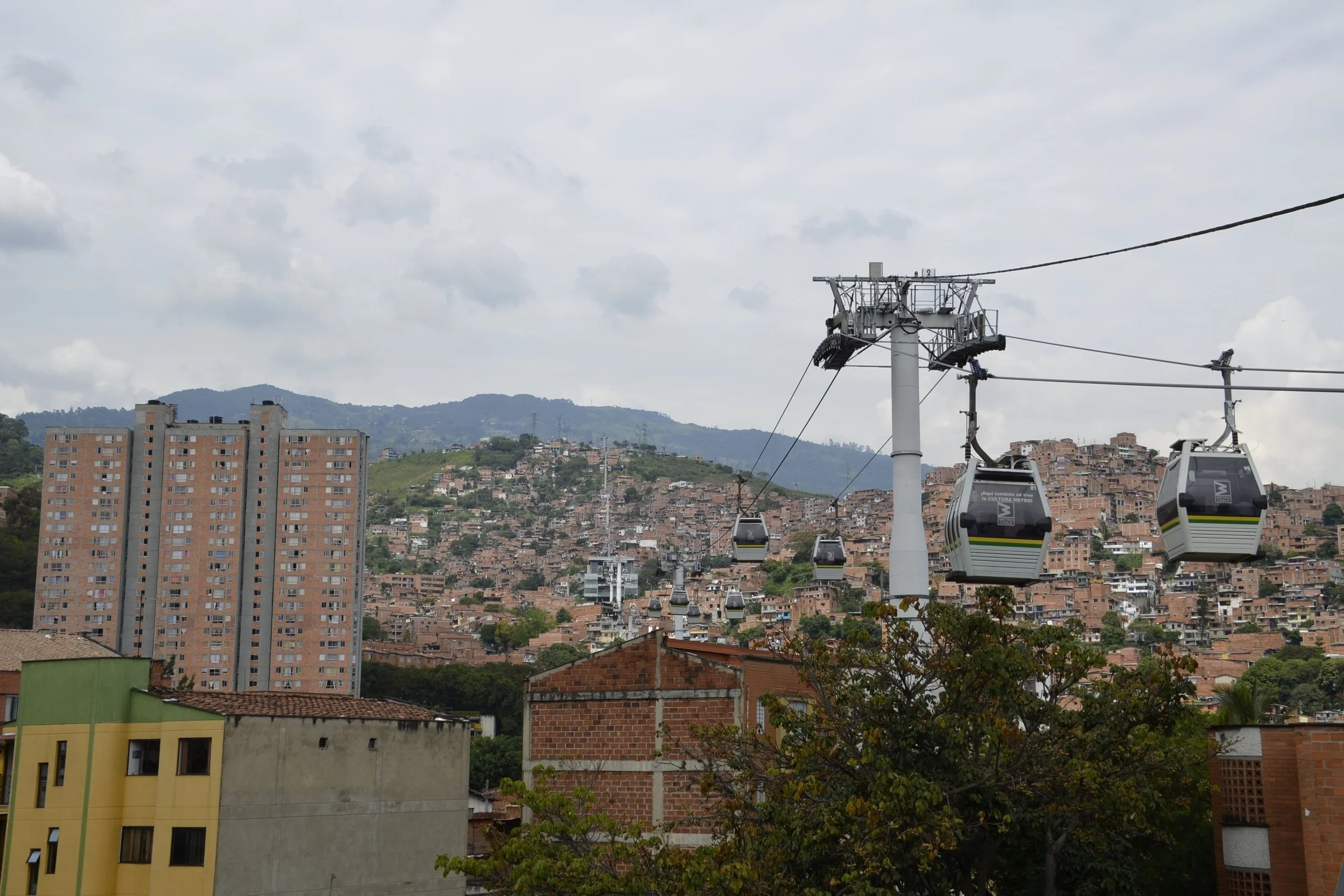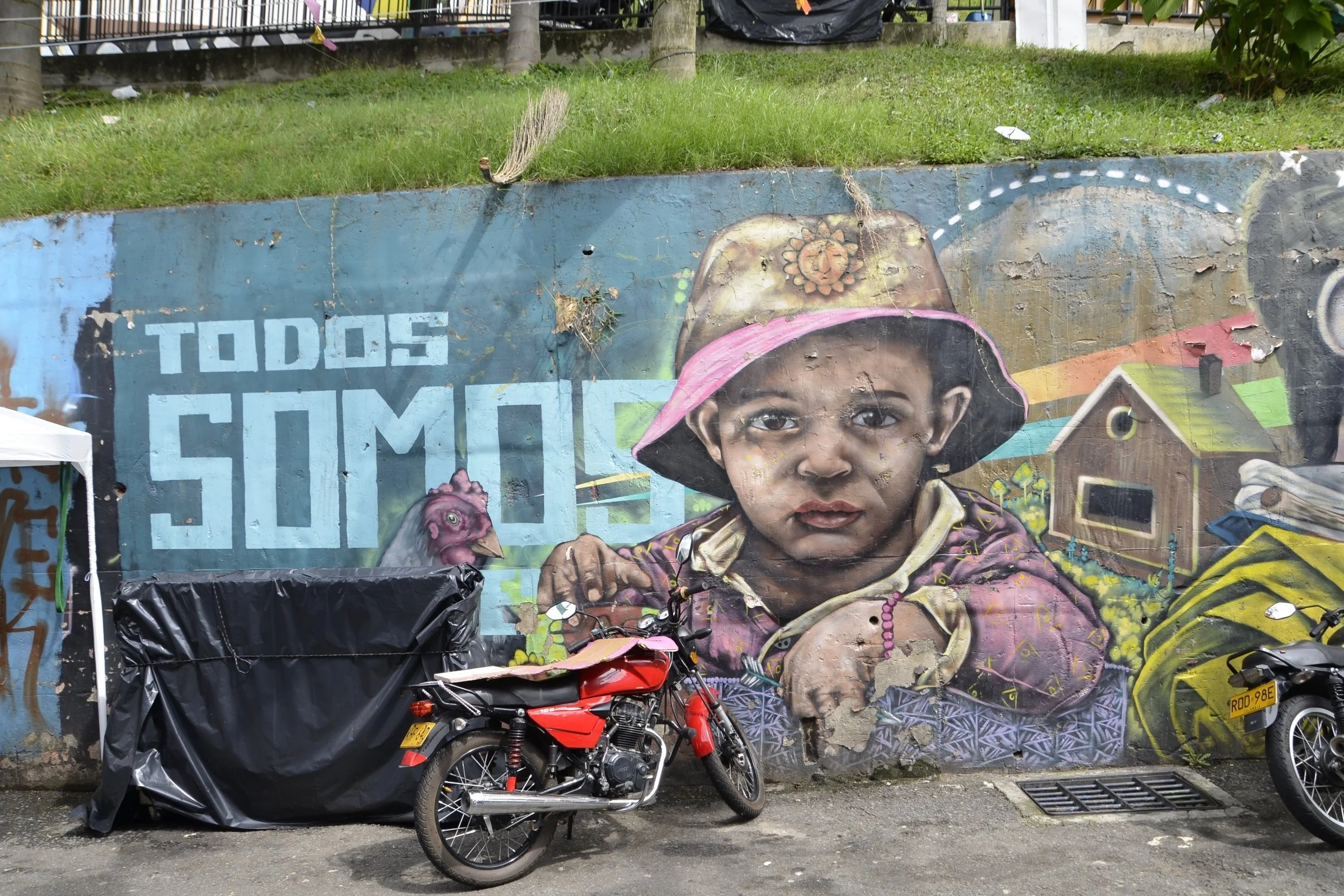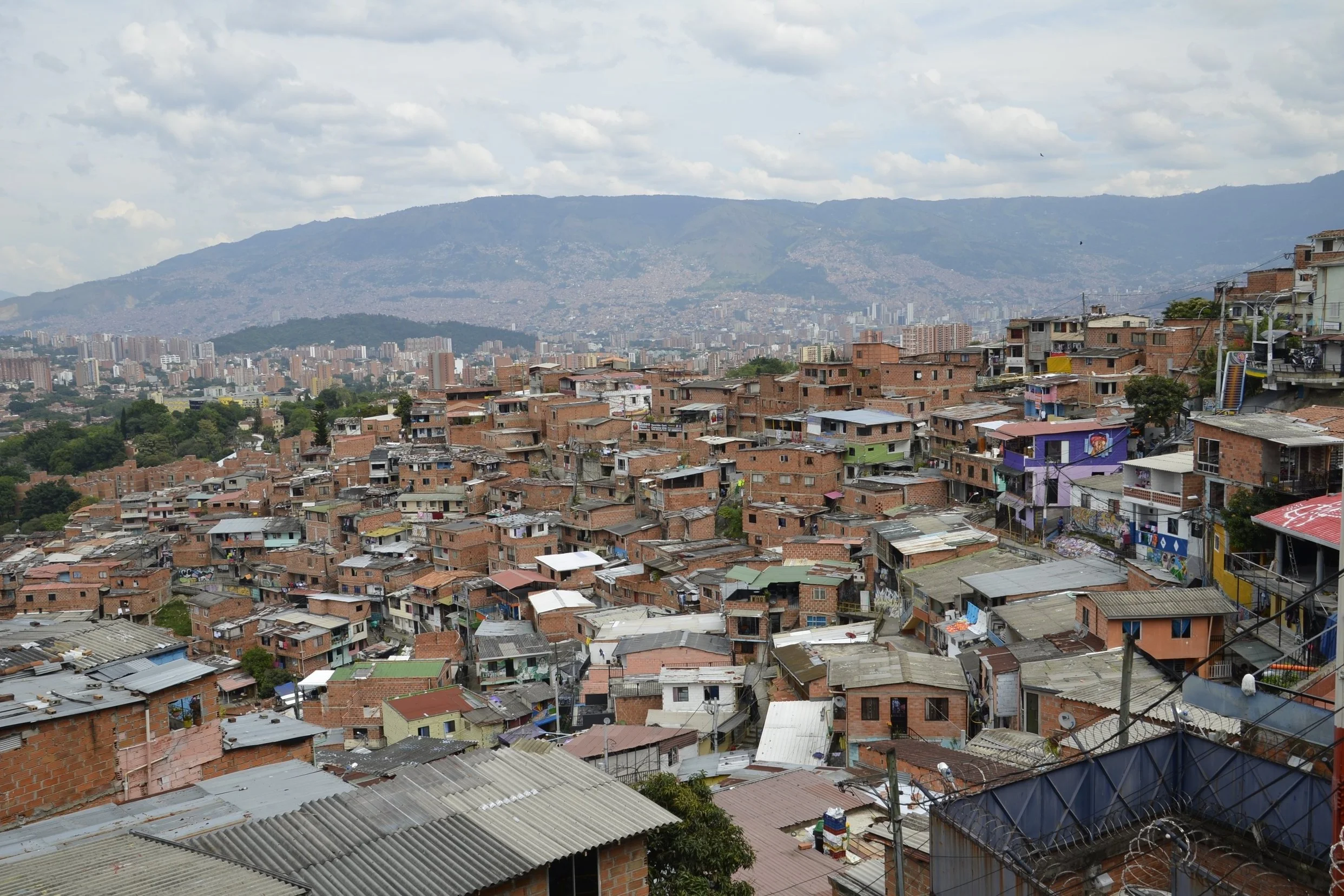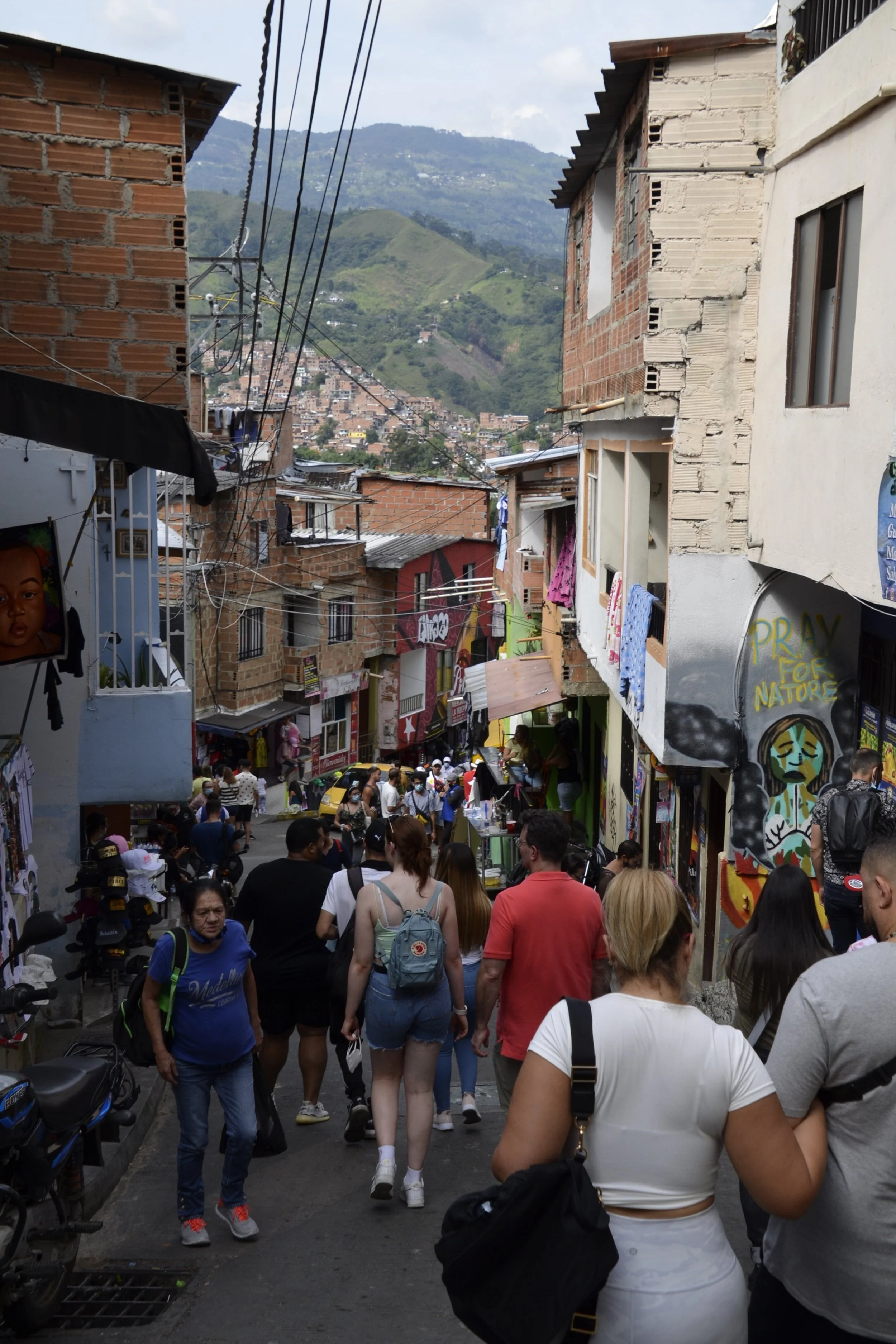Cocora Valley
We stayed just outside the town of Salento at a great mountain retreat, with a beautiful view of the valley from our balcony -
Actually, further east up the valley, out of the right side of that picture, is the “true” Valle del Cocora - home to most of the remaining population of wax palm trees.
This is the national tree of Colombia. It can reach 60m (200 ft) high and is the tallest palm species in the world. They grow only at elevations of 2,000 - 3,000m (6,600 - 10,000 ft) and can live 200 years.
Deforestation and overgrazing has threatened this species, as the seedlings need shade to grow…
… but the contrasting green of the grassy area sure is pretty. :)
The rings on the trunks represent either 6 months or 1 year of growth (according to different sources), and they provide good anchorage for the bromeliads, which are epiphytes (they don’t need soil) -
As we reached the highest point on our hike…
… I glanced to my right…
… to see this Andean condor make a close pass by!
From a census done in 2021, there are only 180 condors in Colombia, but apparently a pair has chosen this valley as home.
From his wrinkly face, you can definitely tell they are in the vulture family. [Colombia is proving better for my bird pictures than Peru!]
I really didn’t want to leave this beautiful, peaceful place…
… but all good things must come to an end.
